










1. What was your first job?
My first “real” job was at A&W in Richmond Centre Mall. I was 14 and we had to wear pantyhose, a navy skirt and an A&W blouse that had to be ironed for every shift. I also had to wear the hat!
At the time, Richmond Centre did not have a food court, so it was a very busy job taking orders and using the cash register. I still love a Mozza Burger with onion rings!
2. Why did you choose the field you are in?
I consider my field to be operations. I love the variety that this field brings and bringing all the different portfolios together – from Finance and HR to marketing and communications, to membership services. I became an accountant when I was 40. I really love both the order and problem solving that accounting represents.
3. What’s your favourite part of your current role?
As the CEO of BCDO, my favourite part of my job is the team building. I love seeing people thrive in an environment that is open and filled with respect. I enjoy collaborating with my colleagues in other associations and finding the bridges to making a difference in all our professional careers.
4. What are some skills or strengths you bring to the team?
I think my biggest strength is my sense of humour. Finding the funny or just enjoyment in a good laugh makes everything easier. I think other people would say that my organization and ability to bring order and process out of chaos is a great skill.
5. What is the most valuable career advice you’ve been given?
The most valuable career advice I ever received was from Sheryl Sandberg – don’t be afraid to sit at the table and speak. When you walk into a meeting, know that you do have a place at the table and your opinion is valued.
6. Where would you like to travel next?
My bucket list trip is an Egyptian Nile River cruise to Luxor. My next trip is camping with my family at the same place we have been going for the past 15 years, near Oliver.
7. What’s your go-to coffee order?
Dirty Chai Latte. Venti.
8. What is an achievement you’re proud of?
I think my proudest accomplishment was getting my accounting designation as a working single mom. It took dedication and perseverance to complete the program.
9. Got any pets?
Yes! I currently have a beautiful, amazing and smart rescue dog from Mexico. Her name is Sza Sza. She is the perfect combination of snuggle bug and derp!
10. What are you most looking forward to for 2024?
2024 is a big year for me – a time of reflection and gratitude. I turn 50 in September which coincides with my 10-year breast cancer survival anniversary. I hope to spend time celebrating with friends and family. I’m crocheting 50 hats to donate to the BC Cancer Agency. So, if you see me in a meeting crocheting – it’s for a worthy cause!
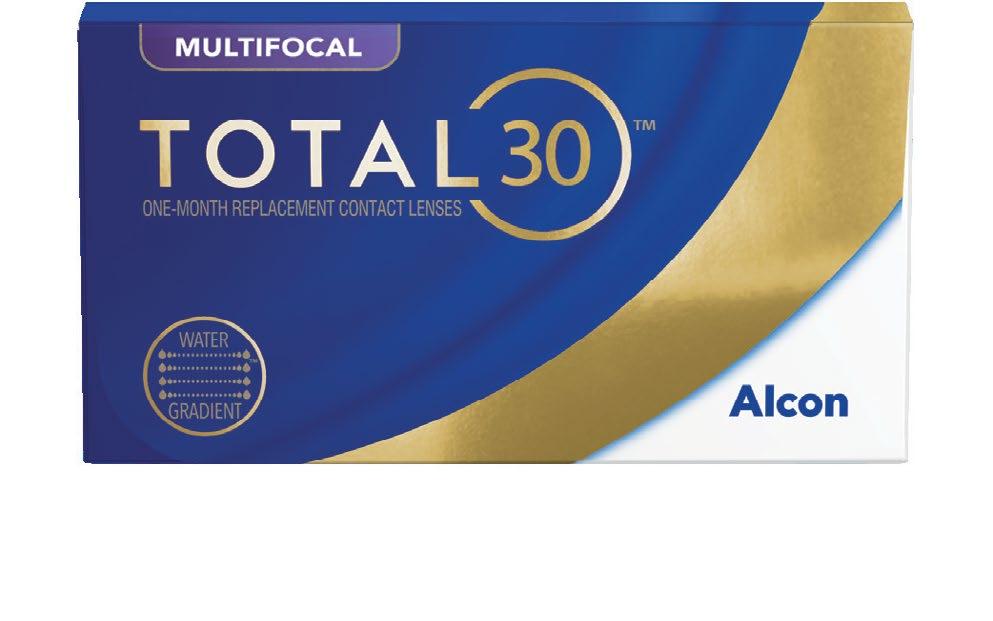

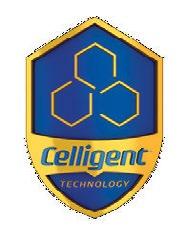

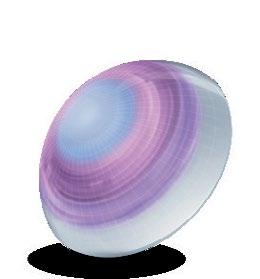
The first and only monthly Water Gradient multifocal contact lens that feels like nothing – even at day 301
Provides excellent visual acuity at all distances, near through far, with Alcon’s proven Precision Profile design that fits in two easy steps and delivers 96% fit success2-4
New TOTAL30® Multifocal contact lenses will help address the vision and comfort needs of the rapidly expanding global multifocal market, which is outpacing the growth of the overall contact lens category5

TORONTO, FEBRUARY 1, 2024 – Alcon, the global leader in eye care dedicated to helping people see brilliantly, announced the launch of TOTAL30® Multifocal in Canada, the first and only monthly Water Gradient multifocal contact lens that feels like nothing – even at day 30.1
Presbyopia is the gradual decline of the eye’s ability to focus on nearby objects, causing them to appear blurry and out of focus.6 Nearly everyone experiences presbyopia; it is a natural part of aging with most people developing symptoms by their early to mid-40s.6
Many lens wearers stop wearing contact lenses after age 40 due to lens dryness, discomfort and visual acuity issues and often begin wearing

bifocals or reading glasses.7 Patients are also on their digital devices more than ever, leading to digital device dryness.8 The new TOTAL30 Multifocal lens helps outsmart digital device dryness by utilizing a proprietary Water Gradient Technology to deliver nearly 100% water at the surface of the lens.9-10
With the introduction of TOTAL30 Multifocal, Alcon continues its commitment to pioneering advancements in fast-growing markets. Data indicates that the multifocal contact lens market is valued over $1 billion globally and growing by double digits annually—more rapidly than the contact lens category as a whole.5 With the prevalence of presbyopia reaching 80% by age 45-55, and an increasingly aging population, the category is expected to be poised for continued growth.11 Alcon’s TOTAL30 Multifocal lenses are uniquely positioned within this market, offering Alcon’s premium Water Gradient innovation at an accessible price point of monthly replacement lenses.
“Building on the innovation of DAILIES TOTAL1® Multifocal, the #1 selling Daily Multifocal design in Canada*, TOTAL30 Multifocal will now offer TOTAL comfort and seamless vision at all distances
to presbyopic patients who prefer reusable lenses,” said Vanessa Johari Hansen, Country Business Unit Head, Vision Care. “With an easyto-fit design and proven fit success rate, TOTAL30 Multifocal is a win-win for both patients and Eye Care Professionals.”2-4,12
The lens utilizes PRECISION PROFILE® multifocal optical design allowing lens wearers to experience clear, uninterrupted vision at all distances, near through far.12 This is the same optical design found in DAILIES TOTAL1 Multifocal. Data shows that TOTAL30 Multifocal contact lenses are as easy to fit as DAILIES TOTAL1 Multifocal contact lenses.4** In addition, 96% of patients were successfully fit in Alcon Multifocal contact lenses with two simple steps.2-4†
TOTAL30 Multifocal is the third contact lens and latest addition to the TOTAL30 product family. TOTAL30 portfolio also includes TOTAL30 Sphere lenses and TOTAL30 for Astigmatism.
Visit https://professional.myalcon.com/ca/en/ professional/contact-lenses/monthly/total30multifocal/ to discover how TOTAL30 Multifocal contact lenses can serve eye care practices and patients with presbyopia.
TOTAL30 Multifocal contact lenses are designed for people with presbyopia and are intended to be used on a monthly replacement schedule. The contact lenses are available with a power range of +6.00 D to + 10.00 D and three ADD powers (Low, Med, High). In Canada, TOTAL30 Multifocal contact lenses are medical devices that must be prescribed by an Eye Care Professional. See product instructions for complete wear, care, and safety information.
Alcon helps people see brilliantly. As the global leader in eye care with a heritage spanning over 75 years, we offer the broadest portfolio of products to enhance sight and improve people’s lives. Our Surgical and Vision Care products touch the lives of more than 260 million people in over 140 countries each year living with conditions like cataracts, glaucoma, retinal diseases and refractive errors. Our more than 25,000 associates are enhancing the quality of life through innovative products, partnerships with Eye Care Professionals and programs that advance access to quality eye care. Learn more at www.alcon.ca
*Based on daily disposable multifocal contact lens dollar share
**At the initial fitting visit
† With 2 lenses or less per eye, at initial fitting visit
References:
1. In a clinical study wherein patients used AOSEPT® solution for nightly cleaning, disinfecting, and storing; Alcon data on file, 2021.
2. Merchea M, Evans D, Kannarr S, Miller J, Kaplan M, Nixon L. Assessing a modified fitting approach for improved multifocal contact lens fitting success. Paper presented at Optometry’s Meeting, the 121st Congress of the American Optometric Association; June 20-24, 2018; Denver, CO.
3. Bauman E, Lemp J, Kern J. Material effect on multifocal contact lens fitting of lenses of the same optical design with the same fitting guide. Poster presented at: British Contact Lens Association Clinical Conference & Exhibition; June 9-11, 2017; Liverpool, UK.
4. Alcon data on file, 2022.
5. Internal estimate based on 3rd party data. Capital Markets Day. Slide 57. 6. Presbyopia. Mayo Clinic. November 20, 2021. Accessed September 5, 2023. https://www. mayoclinic.org/diseases-condi tions/presbyopia/symptoms-causes/syc-20363328.
7. Markoulli M, Kolanu S. Contact lens wear and dry eyes: Challenges and solutions. Clinical Optometry. 2017; Volume 9:41-48. doi:10.2147/opto.s111130.
8. Al-Mohtaseb Z. The Relationship Between Dry Eye Disease and Digital Screen Use. https://www. ncbi.nlm.nih.gov/pmc/articles/PMC8439964. Accessed September 18, 2023.
9. In vitro analysis of lens oxygen permeability, water content, and surface imaging; Alcon data on file, 2021
10. In vitro analysis of lehfilcon A contact lenses outermost surface softness and correlation with water content; Alcon data on file, 2021.
11. The Prevalence and Demographic Associations of Presenting Near-Vision Impairment Among Adults Living in the United States; American Journal of Ophthalmology VOLUME 174, P134-144, FEBRUARY 2017.
12. Baker K, Merchea M. Impact of pupil diameter on multifocal contact lens vision. Poster presented at American Academy of Optometry Annual Conference, November 9, 2018. San Antonio, Texas.

Red light therapy or photobiomodulation (PBM) utilizes specific wavelengths of light to penetrate ocular tissues, stimulating cellular repair, rejuvenation, and promoting healing.
This form of therapy is grounded in the principle of photobiomodulation, where light energy is converted into cellular energy, fostering tissue repair and reducing inflammation. Its application in eye care has shown promising results, particularly in managing conditions such as age-related macular degeneration, glaucoma, dry eye syndrome, and ocular aesthetics.
Numerous studies have shown that PBM is particularly effective in promoting mitochondrial health, enhancing blood circulation, and reducing inflammation from the anterior to the posterior of the eye. These benefits encompass a wide range of areas in eye health:
a) Corneal Healing: PBM has demonstrated its efficacy in promoting corneal healing after surgeries, injuries, or infections. Its ability to expedite tissue repair and reduce inflammation presents an opportunity for corneal regeneration and a lower risk of complications.
b) Dry Eye Syndrome: By stimulating tear production, reducing ocular surface inflammation, and alleviating symptoms, PBM offers much-needed respite to individuals afflicted by this common condition.
c) Contact Lens Discomfort: Contact lens wearers often encounter discomfort and dryness. Nevertheless, PBM can address these issues by enhancing tear production, mitigating inflammation, promoting optimal corneal health, and facilitating comfortable and extended contact lens wear.
d) Ocular Aesthetics: PBM boosts collagen and elastin production, resulting in the reduction of fine lines and wrinkles while also enhancing skin tone and complexion. Wound healing acceleration and reduced skin inflammation are other benefits of red light therapy.
Posterior Eye Health:
a) Age-Related Macular Degeneration (AMD): By stimulating cellular activity in the macula, red light therapy safeguards retinal cells, improves visual acuity and enhances overall macular health.
b) Retinal Disorders: PBM offers a viable management option for diabetic retinopathy and retinitis pigmentosa. It fosters cell regeneration, diminishes inflammation, and augments blood flow to the retina, thereby preserving visual function and ameliorating these disorders.
c) Glaucoma Management: PBM has displayed promising results in managing glaucoma. Red light therapy can enhance blood flow, decrease oxidative stress, reduce IOP, and support overall optic nerve health.
ArunaLight was designed by Ophthalmologists, Optometrists, and leading researchers in photobiomodulation therapy. Unlike other red light devices, Arunalight is a home-based therapy that has been engineered specifically for eye health. Arunalight delivers red light at an optimal wavelength and intensity, targeting the mitochondria within cells to enhance energy production and facilitate repair. This precise application promotes better ocular health by improving blood flow, reducing oxidative stress, and rejuvenating the retina.
ArunaLight was designed with the Arndt-Schultz Curve in mind, ensuring it delivers light therapy within the “sweet spot” for maximum biological response. This optimization includes:
Wavelength of Light: ArunaLight uses a specific wavelength of 660-670nm, identified for its deep tissue penetration and optimal absorption by the mitochondria. This wavelength is crucial for stimulating the photobiological processes that repair and regenerate damaged retinal cells.
Distance from the Light Source to the Eyes: Engineered to maintain an ideal distance from the eye, Arunalight ensures uniform light distribution and maximum therapeutic benefit.
Intensity of Light: ArunaLight delivers light at an intensity that activates cellular mechanisms without causing damage and at an intensity that stimulates without overwhelming the cells.
Duration of Treatment: The device’s treatment duration is calibrated to provide adequate exposure time, ensuring cells receive sufficient energy to trigger the desired therapeutic effects.
Frequency of Treatment: Regular, but not excessive, treatment sessions with Arunalight are designed to maintain and enhance therapeutic outcomes over time.
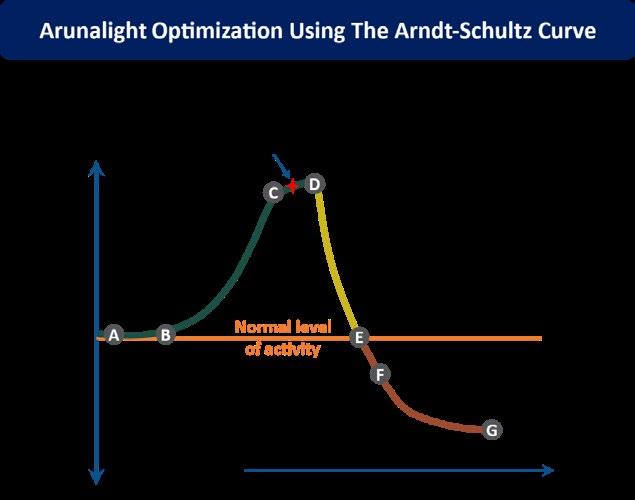
Photobiomodulation (PBM) is a groundbreaking, safe, and non-invasive treatment that promotes cellular survivability and facilitates homeostasis in the eye. This innovative approach significantly enhances ocular health and proper tissue function. By seamlessly integrating PBM into weekly routines, your patients can unlock the benefits of this technology, bolstering overall well-being and augmenting regular optometric care.
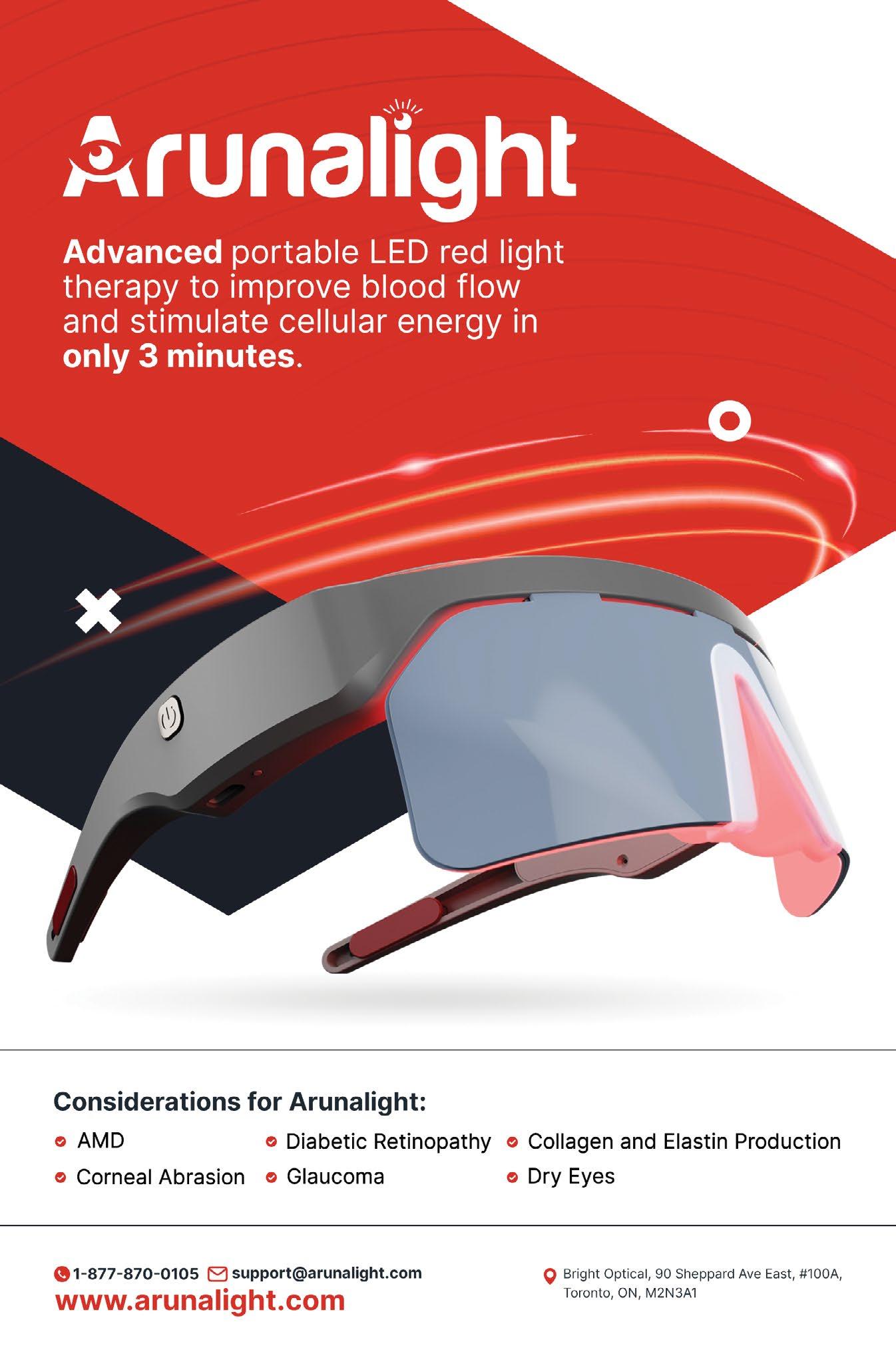
Optometry is evolving, marked by innovations like the Jett Plasma Pen - the first and only patented direct current plasma pen designed for eye care procedures.
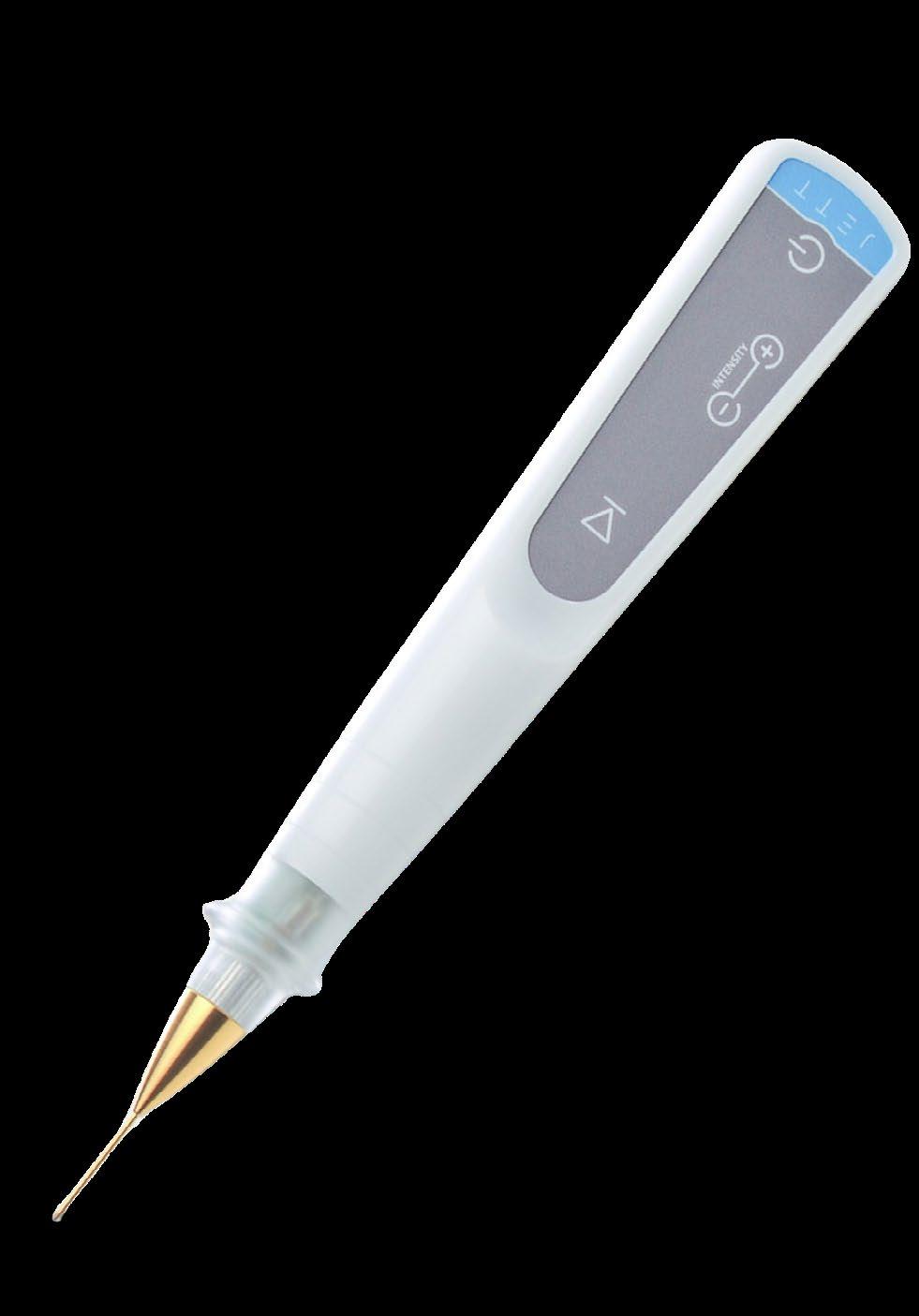
Now available in Canada, this groundbreaking device has revolutionized how eye care providers approach medical and cosmetic treatments for the delicate skin around the eyes. The Jett Plasma Pen’s precise application and minimal downtime make it a versatile, non-invasive solution for treating conditions including dry eye, MGD, blepharitis, chalazion, removal of benign vascular and skin lesions, eyelid tightening and non-surgical blepharoplasty.
Plasma is one of the four fundamental states of matter - the others being solid, liquid, and gas.
The Jett Plasma Pen contains interchangeable metal heads that react with atmospheric gasses between the metal head and the skin when brought close to the skin. This interaction is facilitated by DC voltage ionizing the atmospheric
gasses and creating a plasma discharge that delivers focused thermal energy and micro-discharges to the skin.
Direct current technology places control, safety and versatility in your hands.
Patented direct current (DC) technology has helped the Jett Plasma Pen emerge as the gold standard for ophthalmology, aesthetics, and dermatology thanks to its superior precision and flexibility to perform ablative or non-ablative procedures. DC facilitates a stable and controlled energy output, which is essential to eye and dermatological procedures. Alternating current (AC) plasma devices are more unpredictable and less precise, leading to a higher risk of complications and uneven results. This unique feature allows for unprecedented accuracy, minimizing thermal damage and ensuring targeted, effective treatment.
The Jett Plasma Pen can perform both ablative and non-ablative procedures based on the choice of metal head attachments. Ablative treatments effectively remove the outer layer of skin, triggering the body’s natural healing process, boosting collagen production, stimulating cellular regeneration and aiding in the repair and rejuvenation of treated areas. The non-ablative treatments work beneath the skin’s surface to tighten and revitalize without harming the outer layer.
When it comes to eye care aesthetics, precision is paramount. The Jett Plasma Pen patented DC technology allows for targeted treatment, ensuring that only the intended area is affected. This means less downtime, less risk of scarring, and more natural-looking results for patients, making it the ideal choice for procedures such as upper and lower eyelid tightening, as well as reducing the appearance of crow’s feet and under-eye wrinkles.
Beyond aesthetics, the Jett Plasma Pen is unique in that it can effectively treat Dry Eye, MGD and Blepharitis. The patented non-ablative metal heads use DC micro discharges and pulsed DC microcurrents, resulting in:
• A phase shift in the Meibum (liquefaction)
• Depolarization of the cell membrane, resulting in cell regeneration, loosening of compacted meibum, influx of intercellular water and micronutrients, and reduced inflammation
• Micro thrombosis of telangiectatic and inflamed blood vessels
• An astringent effect causing contraction and expansion of the Meibomian Glands, which results in pushing the liquefied meibum into the intercellular space
Imagine being able to offer your patients a wide range of eye care treatments with just one device, with no consumables and at a fraction of the cost of typical dry eye treatment devices. From skin tightening and rejuvenation to effective MGD and dry eye treatments, the Jett Plasma Pen is the ultimate solution for all your eye care needs. Its versatility, portability, and effectiveness make it the go-to choice for eye care professionals who demand nothing but the best for their patients.
The Jett Plasma Pen is backed by years of research and development, as well as numerous clinical studies, ensuring both safety and efficacy for patients. It is Health Canada approved (unlike most Plasma devices) and provides the most advanced technology and versatile treatment options in a medical Plasma device.
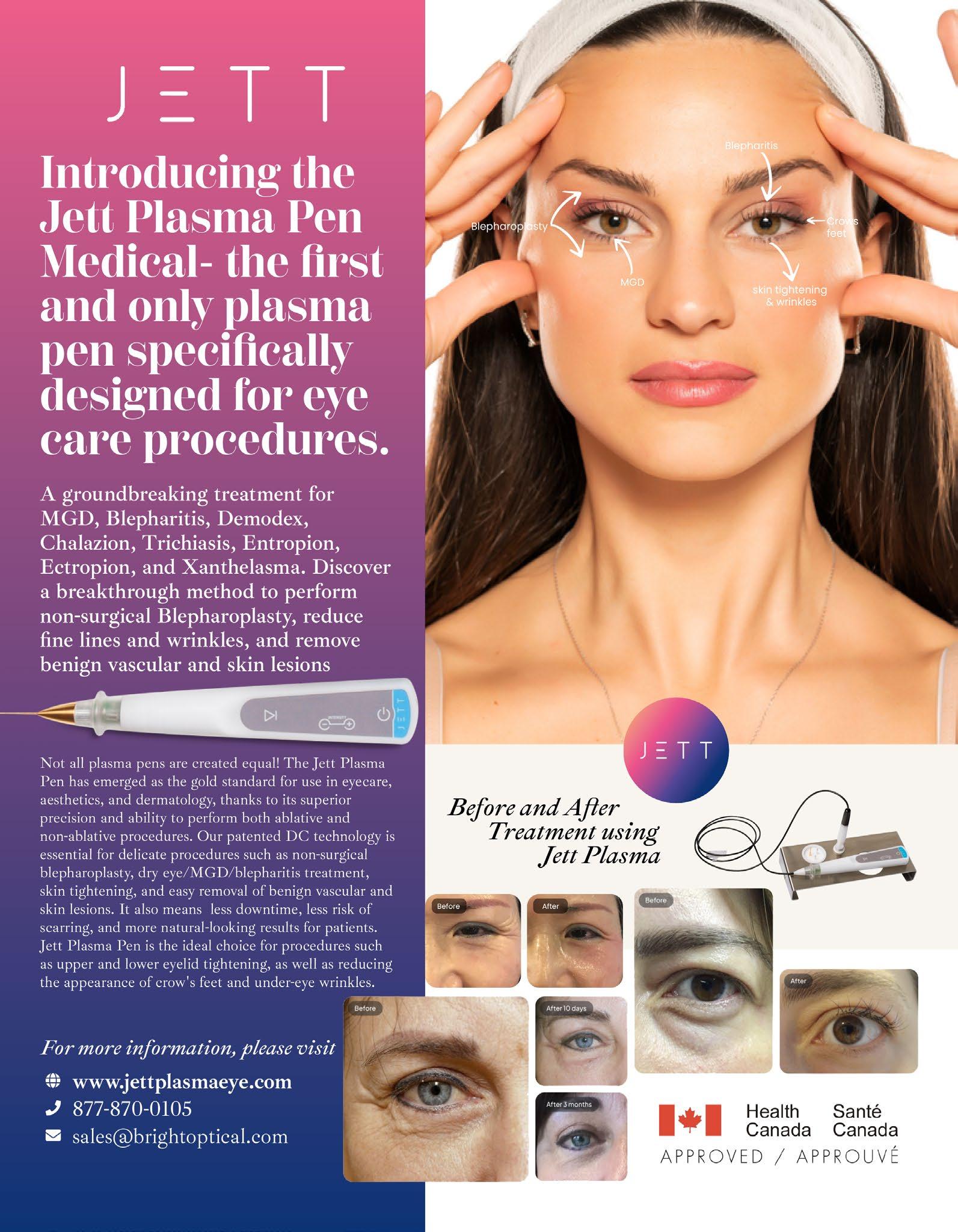
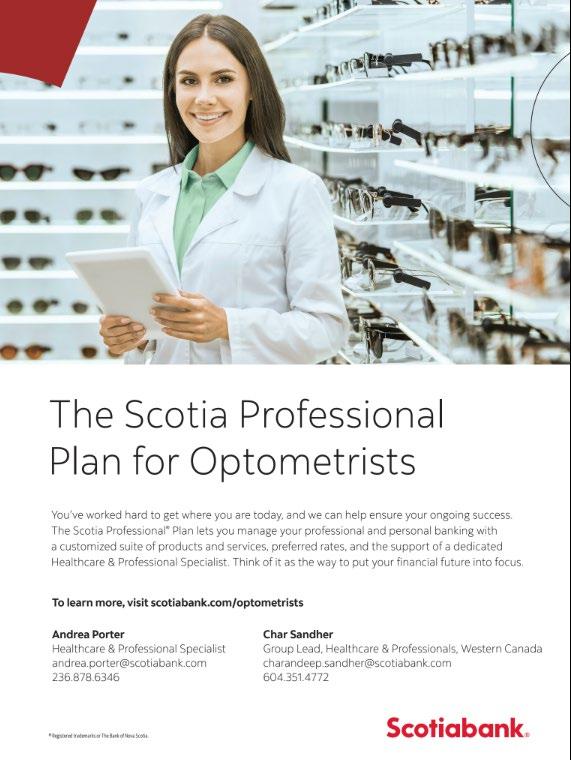
This year, eye health professionals may experience an increase in the number of patients they encounter suffering from ocular allergies.

Well, this is not a coincidence. Approximately 1 out of 4 Canadians over the age of 12, totaling to roughly 8.4 million individuals, suffer from allergies, of which 40% are allergic to pollens or grasses (Statistics Canada, 2018).
Over the last few decades, pollen levels have been steadily on the rise. Across North America, there has been a 21% increase in pollen levels between 1990 and 2018 (Anderegg et al., 2021). According to CBC News, Canada follows a similar trend with an ongoing rise in pollen levels in major Canadian cities, such as Calgary, Montreal, and Toronto (Pelley, 2019). With spring on its way and rising pollen levels, eye health professionals need to be prepared with tools to adequately treat their ocular allergy patients.
Ocular allergies can have a surprisingly negative impact on quality of life
Ocular allergies present symptoms such as burning and itchy eyes, many of which overlap with that of dry eye disease. Although it is hard to dis-
tinguish one from another, there is no doubt that allergy symptoms may be frustrating.
Many ocular allergy patients may see their productivity at work or school decline and limit their participation in outdoor activities. Even at night, ocular allergy symptoms may reduce the hours and quality of sleep. These experiences could act as triggers of negative emotions such as anger, stress, and depression (Bielory et al., 2014; Virchow et al., 2011).
Ocular allergies require an effective treatment approach
The use of allergy eye drops may be an important aspect of ocular allergy treatment. Treatments such as HYLO-DUAL® mini and HYLO-DUAL® provide immediate relief of both dry eye and allergy symptoms.
HYLO-DUAL® is now available in two different pack sizes. HYLO-DUAL® mini at an additional starter pack size with 150 drops and starter price
provides an easier first-time experience. Frequent users of HYLO-DUAL® mini can switch to HYLO-DUAL®, a value pack size with 300 drops for long-term use.
What makes HYLO-DUAL® mini and HYLO-DUAL® all-round drops for dry eye and allergy relief?
Here are important reminders why eye health professionals should recommend HYLO-DUAL® mini and HYLO-DUAL® to their patients!
• Ectoine provides immediate relief of allergy and inflammatory symptoms of the eyes. As a natural osmoprotectant, ectoine stabilizes the lipid layer of the tear film and prevents excessive tear evaporation (Harishchandra et al., 2010).
• High-quality sodium hyaluronate lubricates the eyes for long-lasting dry eye relief (Müller-Lierheim, 2020).
• Safe, German-engineered HYLO® bottle dispenses one drop at a time. It is an airless system with 6 months of in-use sterility.
• Preservative-free and phosphate-free HYLO-DUAL® mini and HYLO-DUAL® are well tolerated and gentle on the eyes.
• Can be used while wearing contact lenses, anywhere and anytime!
Prescribe today and help the patients Feel the Difference with HYLO-DUAL® mini and HYLO-DUAL®.
HYLO-DUAL® mini and HYLO-DUAL® can be found Canada-wide at pharmacies behind the counter without prescription alongside HYLO® family of dry eye treatments and CALMO® / NACLINO™ lid hygiene and at selected optometry and ophthalmology clinics.
For more information and how to order, please visit www.candorvision.com
CandorVision™ – Your eyes are everything!
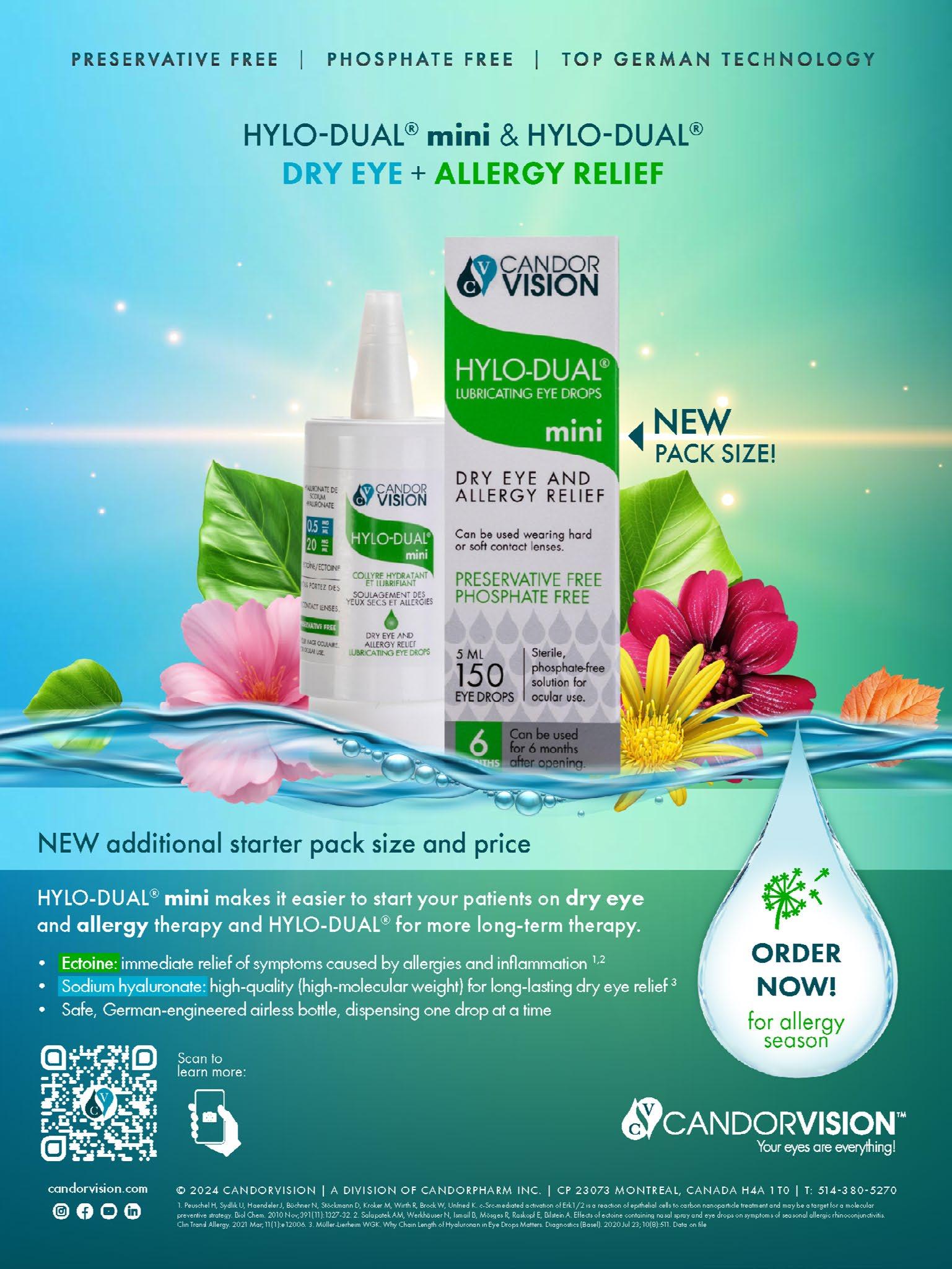
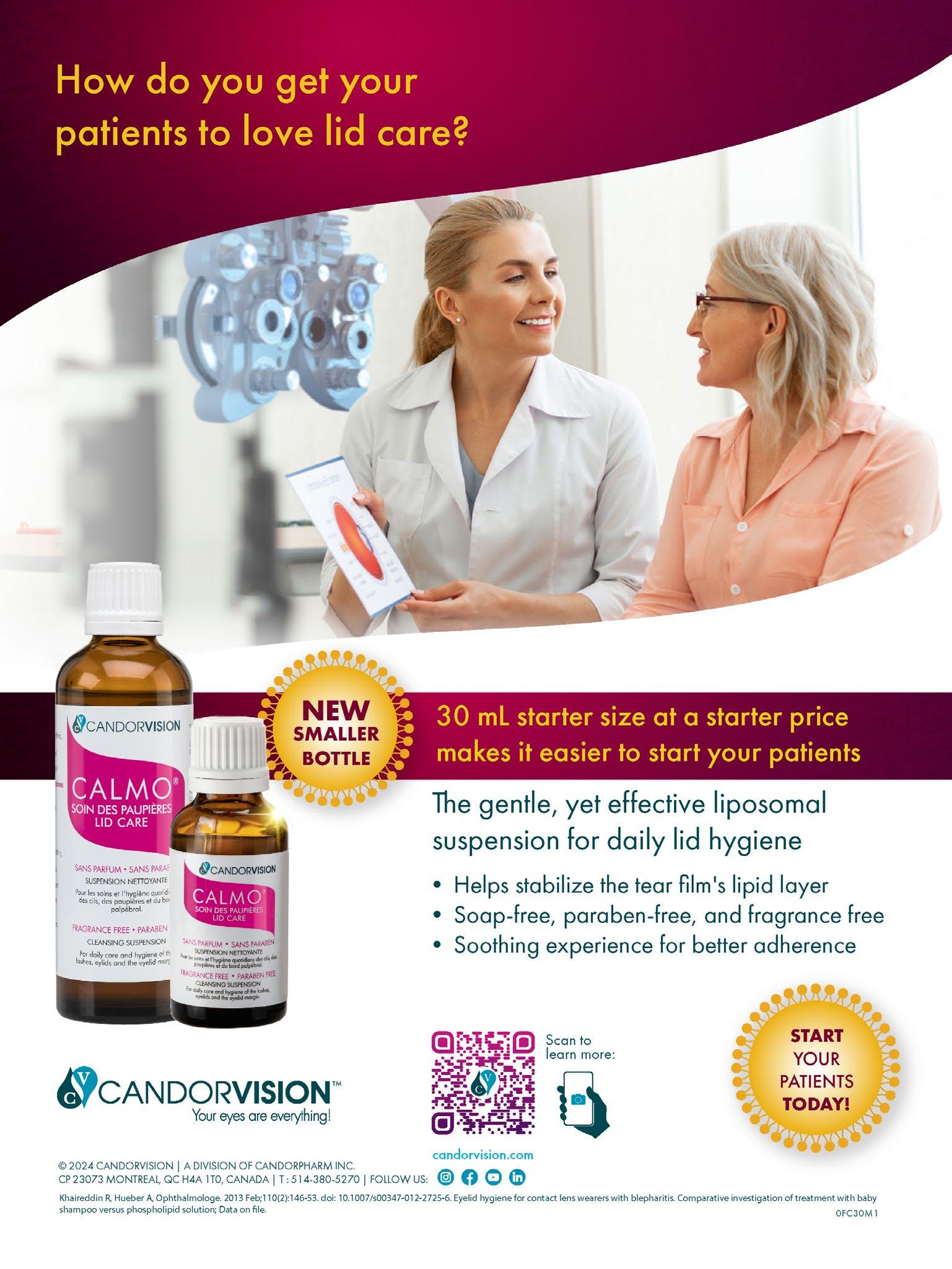
CandorVision (a division of CandorPharm Inc.) starts the year with the launch of CALMO® Lid Care 30mL, its latest addition to the CALMO® family.
Dry eye and blepharitis (an inflammation of the eyelids/eyelid margins) are growing health concerns, affecting millions of Canadians. Dry eye sufferers often use HYLO® lubricating eye drops as a first-line treatment option for dry eye. Hydrating the ocular surface helps to replenish the tear film and provide long-lasting relief from dry eye symptoms.
Regular eyelid hygiene is equally important. Daily cleansing of lashes, eyelids, and lid margins is vital for maintaining a healthy tear film. Inflamed eyelids and eyelid margins may potentially worsen dry eye. Common eyelid hygiene products often contain irritants such as tensides (soaps), which can disrupt or destroy the lipid layer of the tear film. A healthy lipid layer prevents excessive evaporation of natural tears. When soaps damage the lipid layer, evaporation of tears increases, and dry eye symptoms are exacerbated. Choosing a soapfree cleanser for makeup removal and daily eyelid hygiene helps to improve conditions such as blepharitis, ocular rosacea, conjunctivitis, and dry eye.
Fragrance-free, paraben-free, and soap-free liposomal cleansing suspension CALMO® Lid Care has

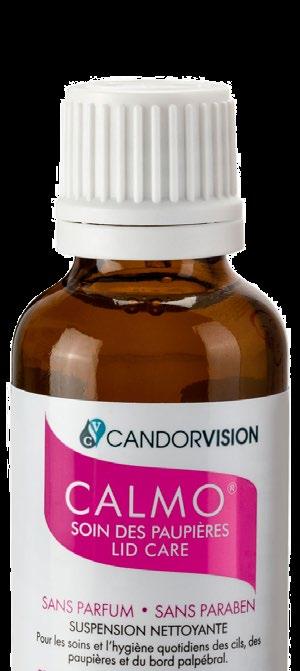
become an important alternative to common lid cleaners. Acting on the feedback of Canadian eye health professionals and patients, CandorVision is excited to introduce CALMO® Lid Care in an additional 30mL starter pack size.
“We start 2024 with the launch of CALMO® Lid Care 30mL for gentle yet effective soap-free eyelid hygiene.” says Dr. Frank Heidemann, President and CEO of CandorVision™. “Unlike standard products, which may sting or burn, CALMO® Lid Care makes your eyes feel better right away. Its

“CALMO® Lid Care 30mL is also ideal for travel – a small bottle that easily fits in your carry-on luggage”.
liposomal formula cleanses gently and helps to stabilize the lipid layer of the tear film, thus relieving dry eye symptoms.”
CALMO® Lid Care 30mL has the same benefits as CALMO® Lid Care 70mL: both are fragrance free, paraben free, and soap free, suitable for daily lid care and gentle removal of ocular debris and makeup. The new pack size of CALMO® Lid Care 30mL will make it easy to start patients on a daily lid hygiene regimen due to its attractive price and comfortable feel during and after application, with its content lasting approximately two weeks. For those seeking longer-term use, CALMO® Lid Care 70mL remains available.
“CALMO® Lid Care 30mL will be a valuable tool for eye health professionals to expand their patient base. Hesitant patients and infrequent users can now easily experience soap-free CALMO® eyelid and lash care,” notes Dr. Frank Heidemann. CALMO® Lid Care 30mL can be found
Canada-wide at pharmacies behind the counter alongside CALMO® Lid Care 70mL, HYLO® family of dry eye treatments, OCUNOX® Eye Ointment, CALMO® Eye spray, and NACLINOTM lid wipes, as well as at selected optometry and ophthalmology clinics.
For more information and how to order, please visit www.candorvision.com.
CandorVision™ (a division of CandorPharm Inc.) is a Canadian-owned and operated company which develops and markets the highest quality ophthalmic medical devices for dry eye and lid hygiene treatment for the Canadian market. CandorVision™ provides cutting-edge technology to health professionals, developed with the protection of our environment and environmentally compliant techniques in mind.
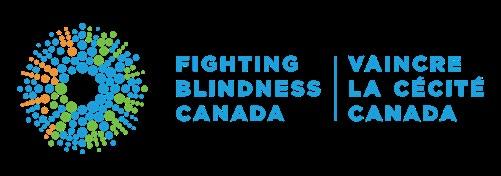
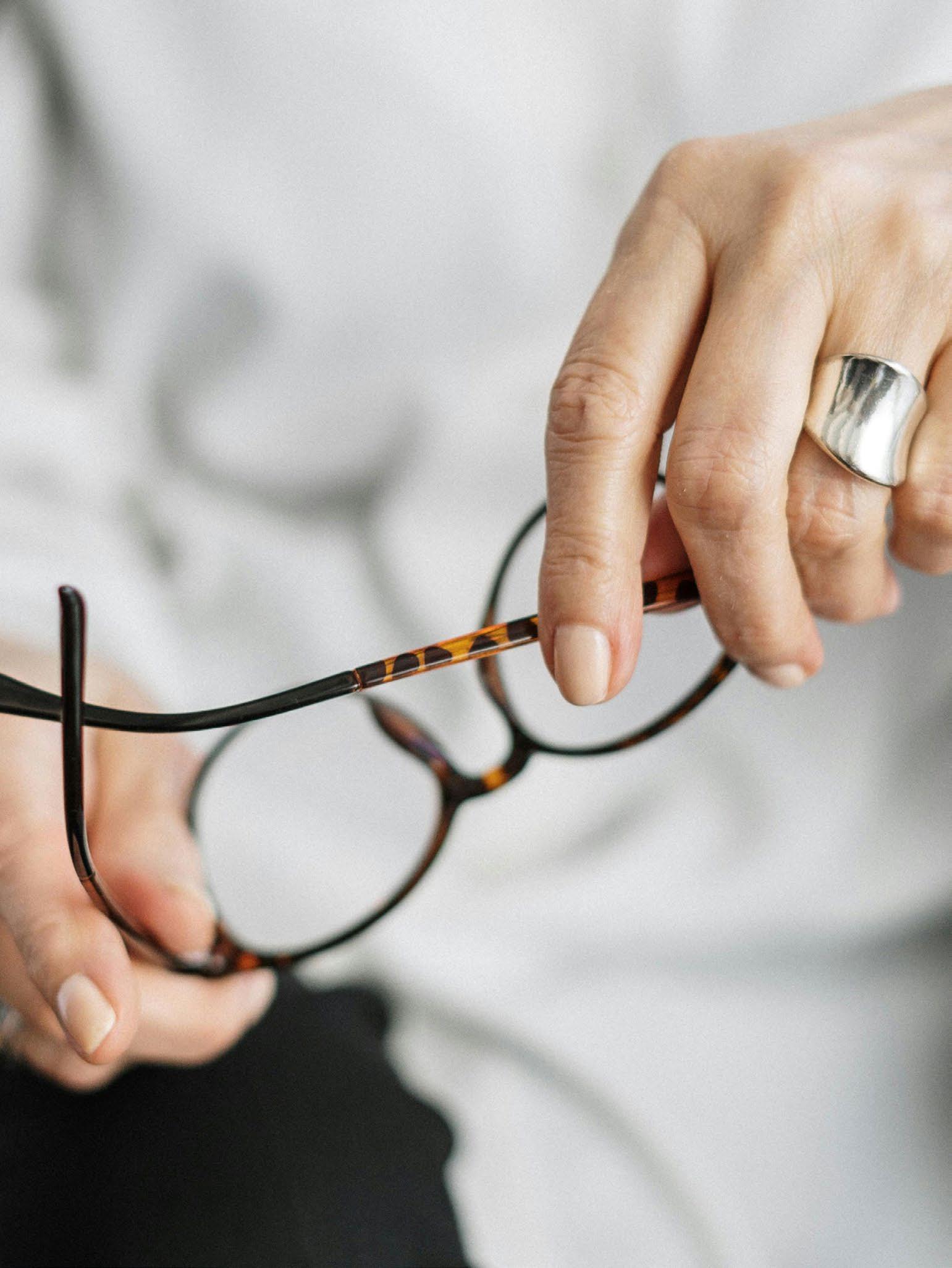
Glaucoma is one of the leading causes of blindness for people over the age of 60.
Below, we’re sharing some of the trailblazing glaucoma research that Fighting Blindness Canada (FBC) is supporting. This research is looking to understand more about the underlying causes of glaucoma and support development of new ways of treating or preventing vision loss caused by glaucoma.
Dr. Balwantray Chauhan (Dalhousie University)
Dr. Chauhan has developed a novel technique that allows him to create very high-quality images of the retinal ganglion cells that make up the optic nerve. The structure of retinal ganglion cells in a mouse model of glaucoma will be analyzed to identify characteristics of optic nerve degeneration during glaucoma progression. If successful, scientists will be able to more accurately measure if a new therapy protects or even regenerates the optic nerve in glaucoma. This would be a major advancement in the field and could help facilitate the discovery of new treatments for glaucoma.
Dr. Luis Alarcon-Martinez (Centre For Eye Research Australia)
Delivery of blood with oxygen and nutrients is essential for the health of retinal ganglion cells. It has been observed that blood supply is disrupted in glaucoma, but it was not clear how or if this impacts optic nerve survival and vision
loss. Using cutting-edge imaging technology, Dr. Alarcon-Martinez recently discovered that small tubes connect the blood vessels that regulate blood flow near the optic nerve and that these tubes break in glaucoma. Dr. Alarcon-Martinez is now studying how these tubes break and if stopping breakage improves blood delivery and optic nerve survival. This project may lead to a completely new understanding of the underlying causes of glaucoma and open the door for new treatments.
Vision loss caused by glaucoma is considered irreversible because there are currently no treatments that can restore vision after the optic nerve is damaged. Dr. Wang and Dr. Liu are testing if insulin eye drops can increase optic nerve survival and even potentially restore some vision in a phase II clinical trial. This trial will include 100 participants who take insulin eye drops once a day for 6 months. We look forward to sharing the results of this study which aims to not only prevent further progression of glaucoma but also to reverse optic nerve damage.
To learn more about FBC-funded research, visit fightingblindness.ca/research/fbc-fundedresearch
Age-related macular degeneration (AMD) is the leading cause of vision loss in people over the age of 55, affecting approximately 2.5 million Canadians.
Dr. Sachdev Sidhu (University Of Waterloo)
The blood-retinal barrier is important for proper retinal function and can be disturbed in eye diseases like AMD and diabetic retinopathy (DR) leading to vision loss. Dr. Sidhu has developed a new antibody treatment (EYE103) which has the potential to restore the blood retinal barrier and help improve vision for those with AMD or DR. With funding from Fighting Blindness Canada, Dr. Sidhu has now moved this treatment into a Phase 1 clinical trial to test if the potential treatment is safe.
To learn more about FBC-funded research, visit fightingblindness.ca/research/fbc-fundedresearch

Below, we’re sharing some of the trailblazing AMD research that Fighting Blindness Canada (FBC) is supporting.
Dr. Matthew Quinn (Ottawa Hospital Research Hospital)
Changes in the microbiome can be caused by inflammation and have been linked to wet AMD. Dr. Quinn is using population-level databases to determine if there is an association between common clinical events that disrupt the microbiome and AMD progression. This knowledge may help to develop new treatments or prevention strategies for AMD. Dr. Quinn, one of our recently announced Clinician Scientist Emerging Leader awardees, explains:
“We are learning it is critical to understand the links between systemic health and vision loss in order to develop new treatments and optimize care for
patients with age-related macular degeneration. This award will fund research that will allow us to better characterize how systemic health events impact risk of macular degeneration progression.”
Dr. Andras Nagy (Lunenfeld Tanenbaum Research Institute)
In wet AMD blood vessels can grow uncontrollably and leak fluid into the eye, damaging retinal cells and causing vision loss. Anti-VEGF injections into the eye can reduce blood vessel growth, but do not restore vision caused by lost RPE cells. Dr. Nagy is trying to develop a vision-restoring cell therapy for advanced AMD. His team is testing whether new retina cells that act as anti-VEGF producing factories can help restore vision and control blood vessel growth.
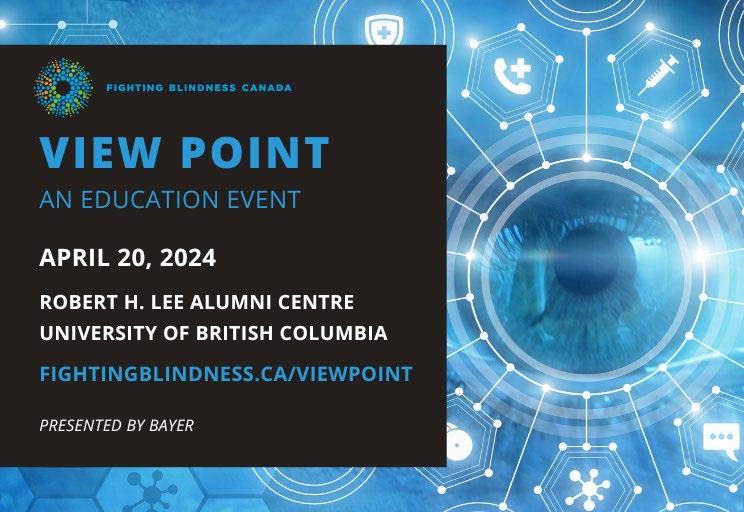

In healthcare, interprofessional collaboration leads to improved patient outcomes.
The same can be said when it comes to achieving financial success as an Optometrist. You need your financial, accounting, and legal professionals to collaborate to improve the profitability of your practice and reach your life goals sooner.
The financial challenge Optometrists often face throughout their career is trying to save for the future while needing to spend money today to take care of their practice, personal, and family expenses. There are also insurance, investment, tax, and legal considerations along the way. Over time, the lack of integrated advice leads to money stress, confusion, and financial losses.
The BCDO Business Helpdesk was created for Optometrists who are looking for a trusted and experienced team of financial planners, accountants, and lawyers who understand their career journey. A team that can minimize the financial risks of being an Optometrist while at the same time maximizing the value of their practice.
Here is how the BCDO Business Helpdesk serves the needs of Optometrists:
Whether you are a new grad, associate, or clinic owner, you have access to a financial planner who understands your career journey and who will help you achieve your life goals by creating an integrated financial, tax, work optional/retirement income, and estate plan. They will also connect you with an Accountant and/or Lawyer through the BCDO Business Help Desk network to ensure integration and ongoing collaboration.
Maximizing the benefits of being incorporated will help you keep more of what you earn to reach your financial goals sooner. The BCDO Business Helpdesk gives you access to Accountants who understand your accounting and tax planning needs whether you are a new graduate, an established practitioner, or exiting your practice.
Throughout the various stages of your career, you will need legal advice. Whether it is understanding a contract before signing on as an associate, buying a practice, drafting employment contracts, or even selling a practice, the BCDO Business Helpdesk gives you access to Lawyers who specialize in serving the legal needs of Optometrists.
The BCDO Business Help Desk was created in collaboration with Financial Literacy Counsel and MNP LLP to elevate the Optometry profession by helping BCDO members make more informed financial, tax and legal decisions. We invite you to take advantage of this exclusive BCDO member benefit by using the link below or reaching out to contact@flci.ca
Get started at https://flci.ca/bcdo-helpdesk/
“…If you want to go far, go together.”
African Proverb
Financial Literacy Counsel (FLC) is a boutique financial education and financial planning company committed to building a financially literate world of stronger families and communities. FLC began educating doctors in 2003 through the UBC Faculty of Medicine. FLC has worked with BC Doctors of Optometry since 2017 to deliver COPE approved education programs and develop BCDO’s Business Help Desk and Financial Wellness Suite. FLC’s programs are also delivered through UBC Transition into Practice, UBC Medicine Continuing Professional Development, BC Anesthesiologists’ Society, Burnaby Hospital Medical Staff Association, Vancouver Division of Family Practice, BC Doctors of Optometry, UBC Professional MBA, Fraser Health, Vancouver Coastal Health and Continuing Legal Education Society of BC (CLE-BC).

Y o u r o n e s t o p s h o p f o r
t r u s t e d a d v i c e t o e l e v a t e
y o u r p r a c t i c e .

Contract Review
Buying a Practice
Selling Your Practice
Financial Planning Retirement Planning Estate Planning
Accounting Incorporation Tax Planning
Whether you're a practicing Optometrist, clinic owner, or new graduate - as part of your BCDO member benefits - you're eligible to receive complimentary financial, tax and legal consultations from experts who understand your profession. We are committed to helping you make informed decisions and help you reach your goals!
Services provided by:


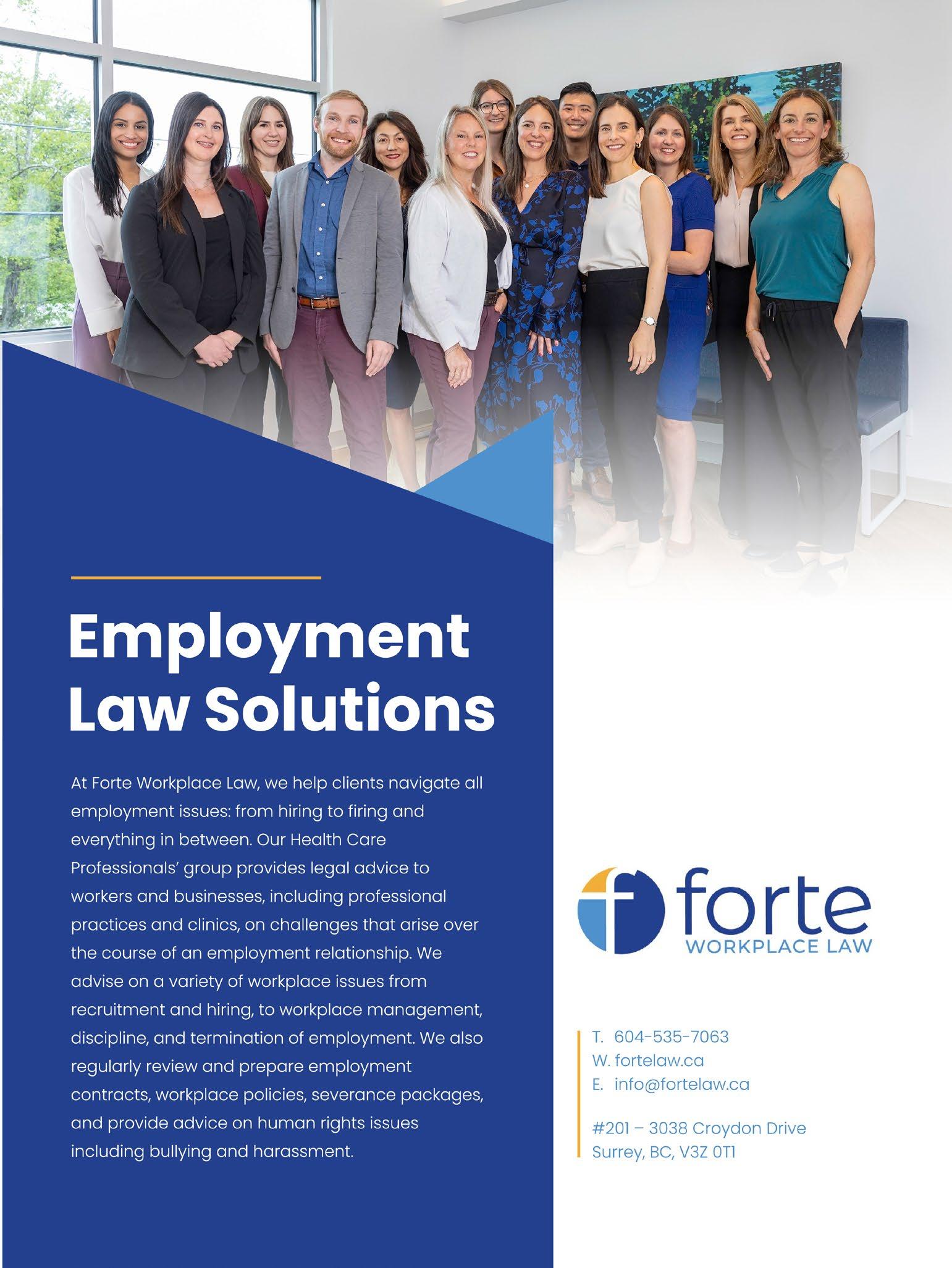
As employment lawyers we spend a lot of time talking about employment contracts because they can define rights under employment law. As written proof of the agreement between the employer and employee, employment contracts help prevent misunderstandings about duties, responsibilities and expectations, and when an employee needs to be let go, they can also limit how much severance is owed.
If an employer wants to let an employee go without cause in BC and there is no written employment contract, the employer could owe the employee up to 24 months severance pay (and in very limited circumstances, even more). On the other hand,
a well drafted termination provision in an employment contract, can limit how much is owed to as little as 0-8 weeks severance pay. The amount of severance owed to an employee depends on whether there is a legally enforceable termination provision in a legally binding employment contract as well as whether there are other issues like discrimination.
Without contracts workplaces are much more likely to have misunderstandings which can lead to conflict and ultimately legal problems. This is because good contracts give everyone a better understanding of their duties, responsibilities and obligations to each other. While verbal agreements

can be binding, the law says some things must be agreed to in writing and the reality is when employment relationships go south and all you have is a verbal agreement, you are much more likely to have a dispute about the key terms. Having your agreement down in writing means everything is clearer. It gives everyone peace of mind and somewhere to go if there are questions about obligations, expectations, and notice and costs to terminate the relationship.
BC has legislation called the Employment Standards Act that puts a lot of obligations on the employer regarding pay, overtime calculations, hours of work, vacation, etc. Setting things up to be compliant with the Act can save the employer having to deal with complaints and potentially being fined and penalized by the Employment Standards Branch.
Simply, employment contracts reduce risk. They clarify entitlements and expectations. They limit exposure to severance pay. It’s also easier to agree
on things at the start of the relationship before there are any issues and when there is no friction between the parties. Having a good contract can prevent costly and time-consuming claims and the costs of putting contracts in place normally pales in comparison to the costs of a single severance claim.
We enjoy educating our clients and take a proactive preventative approach to addressing potential issues, through creating contract templates and policies for them. We can help you put together a contract that is valid and enforceable and give you advice on how to properly implement it.
This article is not intended to serve as legal advice, and only provides legal information. Every situation must be considered on its own facts. If you need legal advice, please contact us by phone at 604-535-7063 or email info@fortelaw.ca.
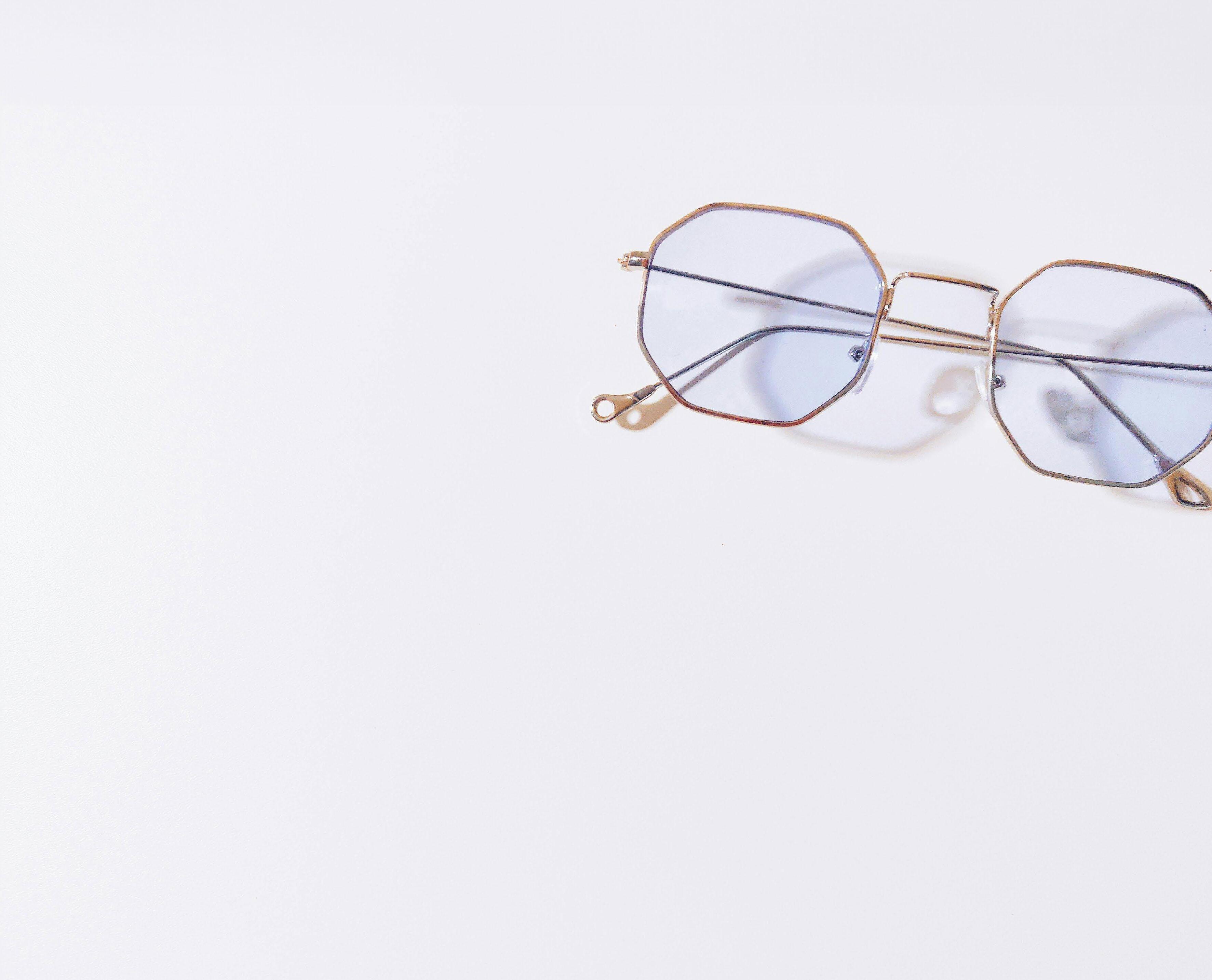
As an eye care professional, you care about delivering your patient the proper UV eye protection to avoid long-term impacts to their vision.
Your patients, on the other hand, often think about the comfort, fit, and style of the frame.
The goal is to combine the two: help patients understand the importance of UV protection, without sacrificing style or comfort. You can enhance patient satisfaction and boost sunglasses sales during the sunny season by assisting patients in discovering the sunglasses frames that are right for them.
Key considerations for how to choose sunglasses frames for your patients
As you help your patients choose the best sunglasses frames for themselves, here are the features you need to pay attention to the most.
Focus on the contact area, without pinching your patient’s nose. With more contact area, the bridge of the nose can provide more stability and comfort for patients. The last thing they want to do is adjust their sunglasses over and over again.
Another factor to consider is ensuring that the patient’s pupil is centered vertically within the lens opening.
When it comes to selecting types of sunglasses frames, consider larger sizes and frame widths. The skin around the eye is also at risk of sun damage in addition to the eye itself. Find frames that cover a large enough area to provide full protection.
Sunglasses must be ready to take on punishment from a day on a boat, or an afternoon of exercise. They need to fit securely, even when perspiring. For frames with temples that bend behind the ears, ensure the bend is in the appropriate position with enough temple behind the ear to adjust for a secure fit.
Frames with straight temples need adequate tension, with a sufficient touch of the temples to the side of the head beyond the top of the ears — with minimal touch in front of the ears.
The patient may want something for its style alone, but make sure they understand the pros and cons of different options. The wrong fit may cause discomfort for them regardless of the style.
When guiding patients on sunglasses shape, you can use the same guidelines you use with any pair of glasses. Emphasize some facial characteristics while outbalancing others.
Consider the patient’s face shape, contrast, and proportion. The frames should contrast the shape of the patient’s face, whether they have a squareshaped face or a heart-shaped face. Sunglasses cover more surface of the face to provide adequate UV protection (not to mention larger sunglasses are almost always trending).
When determining materials for different types of sunglasses, you have to take into consideration the fit and function of the sunglasses themselves. Sunglasses for sports and activewear must be lightweight and impact-resistant. Phoenix and polycarbonate lenses are strong contenders, while plastics or metals with safety hinges offer durable support.
Here’s a quick checklist for helping your patient choose prescription sunglasses, including the lenses.
Prescription sunwear is the best eye health solution to protect the eyes, eyelids, and skin around the eyes from sun-related damage. With so many advancements in lens technology just over the last decade, these are the features your patients should look for in prescription sunglasses:
• 100% UV protection
• Solar blue light protection
• Comfort
• Visual clarity
• Enhanced contrast
• Impact protection
• Glare reduction
• Extra darkness outdoors
• Style variety
• Affordability
• Indoor/outdoor setting (optional)
Some patients may be unwilling to carry two pairs of glasses and therefore think prescription sunglasses are a hassle. Approach this objection by recommending a photochromic option, providing wearers with the lens comfort they need in all different light situations possible.
This allows a range of combinations that suit different wearer needs and can be tailored for almost all HOYA lens designs. For example, lenses like our Sensity® 2 light-adaptive lenses offer you more comfort and convenience in all light conditions without sacrificing style.
At the end of the day, you’re trying to run a business on top of being the trusted eyecare provider for your community. Here are some tips for encouraging your patients to get a pair of prescription sunglasses this season:
Use sun season to start the right conversations
• Be specific about UV damage to each part of the eye
• Keep it conversational and educational
• Break down the benefits of prescription sunglasses
• Promote prescription sunglasses variety and affordability
• Talk about prescription sun lenses in the middle of the exam instead of at the end
• Make recommendations based on lifestyle
• Consider adding questions to patient intake forms that could help initiate conversations based on family history, time spent outdoors, and time driving
It’s easy to focus on lens features or let patients pick something that doesn’t match their original needs. Frames need proper consideration for the final product.
It’s hard enough to encourage patients to purchase a second pair of glasses. Streamline the process for them. Help your patients decide on a frame that will fit their face shape and their lifestyle while also supporting their eye health with the right prescription sun lenses.
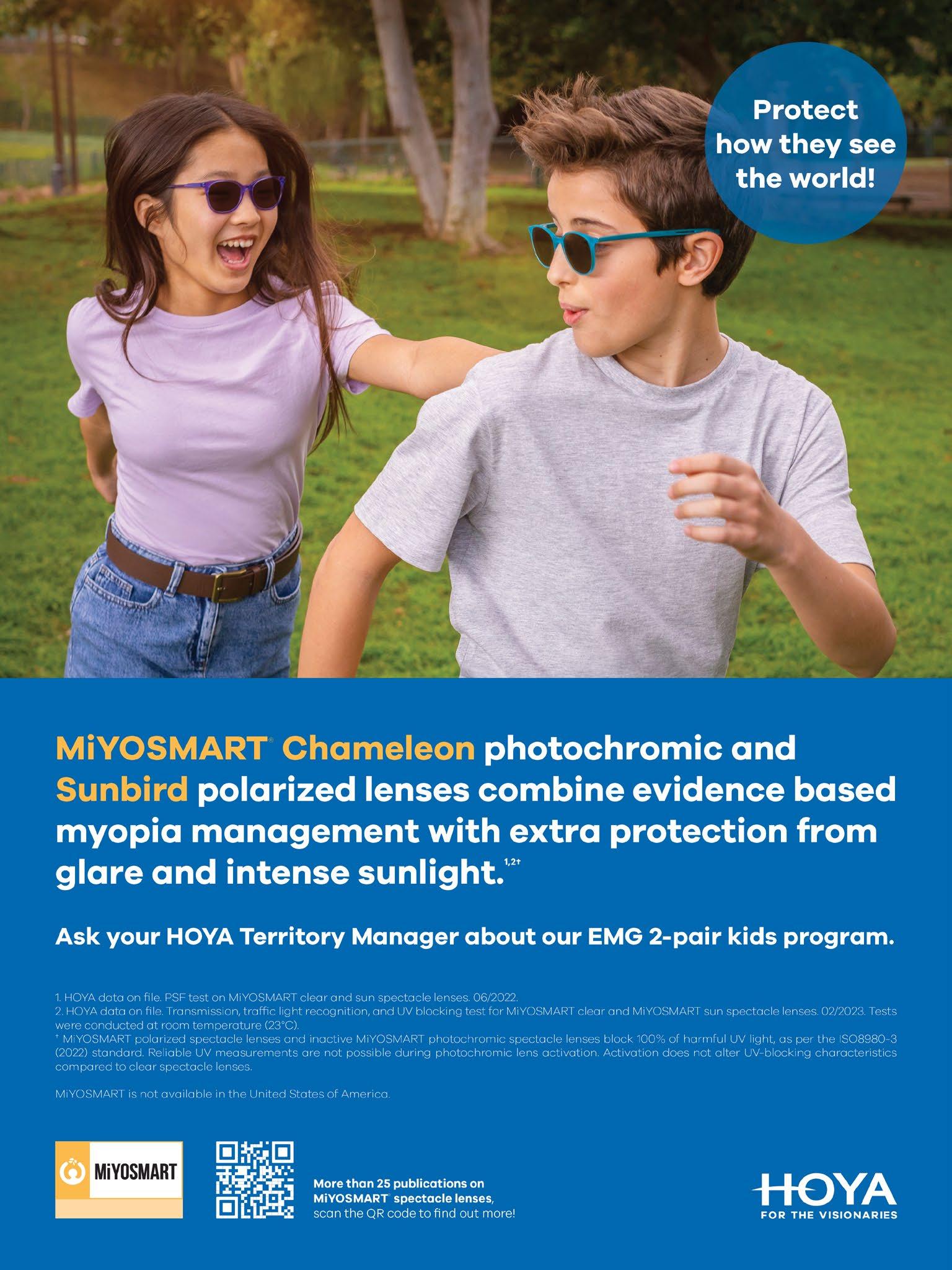
Optos platforms and the optomap improve practice flow, support patient engagement, and contribute to revenue streams to my clinic. See how I’ve unlocked the future of my first-year practice thanks to Optos.
As an optometrist in my first year of solo private practice, I know that optimizing revenue while improving quality of care is foundational to stability and growth. Investing in technology such as new imaging platforms yields dividends that justify the initial capital expenditure and empowers me to stand out from my competitors in a crowded market.
After speaking with many successful ODs in BC and Canada, a common recommendation was bringing in Optos as they stated they wish they would’ve acquired it sooner. Monaco from Optos was then among the first pieces of technology I acquired when opening my solo private practice. The Monaco provides single capture ultra-widefield retinal imaging (UWF™) technology, spectral-domain optical coherence tomography (SD-
OCT), and fundus autofluorescence imaging in a single device. Optos produces the only device that can capture a 200° (82% of retina) retinal image in a single capture, or up to 220° (98%) using the automatic montage function. The high-definition digital depiction of the retina is called an optomap, and users can customize imaging outputs to show red-green, red-free, and choroidal optomap images.
The benefits don’t stop only at imaging, however. The UWF technology has made my clinical exams more efficient, enhanced my standard of care, improved the patient experience, and burnished my reputation—all of which resulted in more realized revenue, which was paramount to the financial health of my nascent practice.
Positioning the Monaco as a central piece to my exam protocol has improved the efficiency of my appointments. Upon presentation, my staff promptly directs patients to the photography room. Many of the patients I see are new to my clinic, and capturing baseline imaging on a multimodal platform keeps patients in a single chair while my team captures ultra-widefield fundus photography, fundus autofluorescence, and full glaucoma management OCTs with reference database, and/or raster OCT scans all on the Monaco.
The intuitive interface of Optos platforms allows technicians to be quickly trained in capturing high-quality images. Because the ultra-widefield imaging modality on my Monaco captures up to 82% of the retina in a single image (and up to 98% with montaging) undilated, patients must not endure long sessions in the photography suite.1
Stats show that overall patient visit time is reduced by approximately 33%2 and my clinic has experienced similar reductions while simultaneously allowing me to spend more one-on-one time with my patients, all due to more efficient pretesting. What you choose to do with that time back is up to you: perhaps you dedicate more time to administration, choose to book more patients, or merely accept the flexibility that such a schedule allows.
After their photography sessions are complete, patients move to the exam room for the optometrist-facing portion of their appointment. During a dilated examination, I scrutinize areas that stood out on the optomap as worthy of investigation. Because

ultra-widefield imaging allows providers to detect 66% more pathology than traditional imaging methods,3 I have already elevated the standard of care for patients: if I detect early disease, I can treat, monitor, or refer before complications set in, thereby averting visual disruption. If I detect disease on an optomap that is worthy of referral, I can easily export the images along with any relevant patient history to the specialist I recommend.
For patients without pathology, capturing an optomap enhances care by providing a baseline snapshot of the patient’s periphery against which any future imaging reports can be compared. In both instances, the care I offer is as advanced as possible thanks to my Monaco.
Patients, like providers, prefer efficient but thorough exams. Because the examinations that leverage my Monaco take less time (while also elevating the standard of care), patients feel like their appointments are not as burdensome. They often leave satisfied with the efficiency of their visit.
Some patients, especially those with pathology, have questions about my exam findings. The optomap serves as a useful tool for patient education in these instances. Many times my patients are so wowed with the images that they request them and I easily email them. My patients really appreciate it because it gives them a sense of control and they’ve never seen an image of their retina before.
In one particular case, a young, asymptomatic male came in for a routine eye exam. During the examination I was able to find peripheral atrophic holes. He was so impressed, he referred four of his family members which are now regular patients. This is a perfect demonstration of how this technology captures pathology, enhances patient experience, grows my practice, and increases revenue.
With happy, educated, and empowered patients come referrals, positive online reviews, and returning patients. Earning a reputation as an innovative practice thanks in part to my use of advanced imaging technology has served me well in my first year, as I’ve been able to grow my patient base via word-of-mouth recommendations and web searches.
The myriad of benefits of using the Monaco by Optos - from maximizing efficiency and elevating the standard of care to enhancing the overall patient experience and bolstering my professional reputation - have collectively contributed to a significant outcome for my growing practice: the emergence of new revenue streams.
I can see more patients in a single day thanks to the efficient nature of my imaging and exam protocols. For a newer practice, this results in more revenue and time to establish relationships with visitors who may become long-term patients.
An enhanced standard of care powered by Optos means I detect more pathology than I might on a less detailed visit, allowing me to perform (and bill for) more thorough examinations. If I provide primary eye care for a patient on a recurring basis after detecting disease on a routine exam, I expect to capture any care-related revenue.
Once I have established trust with patients, I also find that they spend more time in my dispensary with my opticians, thereby generating revenue beyond the examination. In instances where patients experience a longer-than-anticipated wait for the in-person portion of their examination, our team guides them to the dispensary immediately after undergoing undilated retinal imaging. This thoughtful approach allows patients the opportunity to browse and shop for frames or other materials at their convenience before their consultation with me.
Importantly, the generation of these new revenue streams is not attributed to marketing expenditures or reliance on sales tactics. Instead, it is the result of delivering a top-tier, state-of-the-art optometric exam, with significant credit due to to the pivotal role played by the Monaco that is central to my practice.
Michelle Mann, OD, MPH, owns and operates Mishe Optometry in Surrey, BC.
Be a part of the British Columbia retinal imaging revolution! Ask about our integrated OCT and ultra-widefield solution for further practice flow efficiencies.
Contact your BC Optos representatives at 604-992-9204 and bds@optos.com, or visit www.optos.com
CITATIONS
1. Data on file.
2. Lin CC, Li AS, Ma H, Lin XM, Olivares MZ, Haubrich A, Sanislo S, Do DV. Successful interventions to improve efficiency and reduce patient visit duration in a retina practice. Retina. 2021 Oct 1;41(10):2157-2162.
3. Kehoe PH. Widefield patient care. Poster presented at European Academy of Optometry and Optics meeting, Berlin, Germany, May 19-22, 2016.
optomap is multimodality imaging technology, able to generate high-resolution 200° ultra-widefield (UWF™) images to visualize vitreoretinal, retinal and choroidal layers from pole to periphery.1
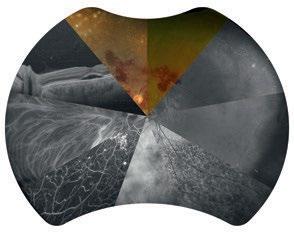
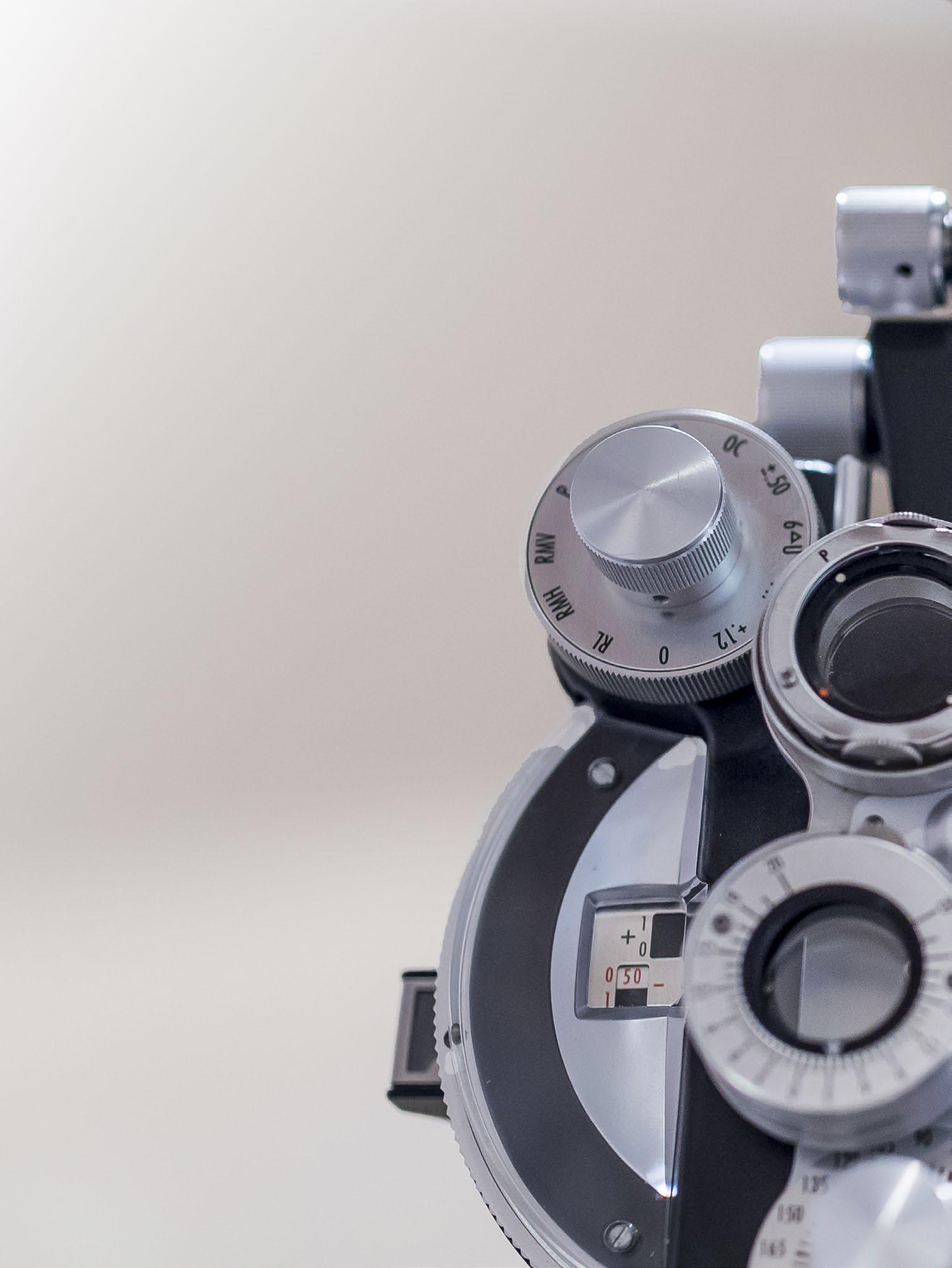
In the rapidly advancing field of optometry, where precision and innovation are essential, the importance of maintaining a highly skilled and adaptable workforce cannot be overstated.
Optometric practices that invest in comprehensive employee training and development programs position themselves not only to meet the evolving needs of patients but also to lead in shaping the future of eye care.
Below are the advantages of prioritizing employee training, ranging from keeping up with technological advancements to nurturing a culture of continuous improvement and leadership within optometry practices.
Staying up to date with technological advancements:
The landscape of optometry is continually transformed by technological advancements, ranging from advanced diagnostic equipment to treatment options. To fully leverage the benefits of these advancements, optometric practices must ensure that their staff is well-equipped through targeted training programs. These programs should cover the latest developments in digital imaging, contact lens technologies, and electronic health record systems.
By investing in further education, optometrists and support staff can confidently and seamlessly integrate these innovative tools into their practice, thereby enhancing the quality of patient care.
The key to a thriving optometric practice lies in delivering outstanding patient care. Regular training sessions, emphasizing the enhancement of clinical skills, are crucial in ensuring optometrists provide precise diagnoses and efficient treatments.
By committing to continuous learning among staff, optometry practices can not only meet but exceed patient expectations, contributing to positive health outcomes and patient satisfaction.
Improving customer service and patient experience:
Often the first point of contact for patients, the front-office staff play a crucial role in setting the tone for the overall patient experience. Training for these roles should focus on customer service skills, and effective communication. By creating a welcoming and supportive environment, optometric practices can enhance patient satisfaction and build lasting relationships.
Developing leadership skills:
As optometry practices expand and evolve, the need for effective leadership becomes increasingly critical. Employee training and development programs should include leadership and management skills. Investing in leadership development contributes to the overall success and sustainability of the practice.
In the dynamic and competitive landscape of optometry, investing in employee training and development is not only a strategic option but a necessity for long-term success. The advantages go beyond enhancing individual skills and include enhancements in patient care, heightened operational efficiency, and building a culture that values innovation and excellence. By investing in their most valuable asset, their people, optometry practices can ensure a brighter, more successful future for themselves and the patients they serve.

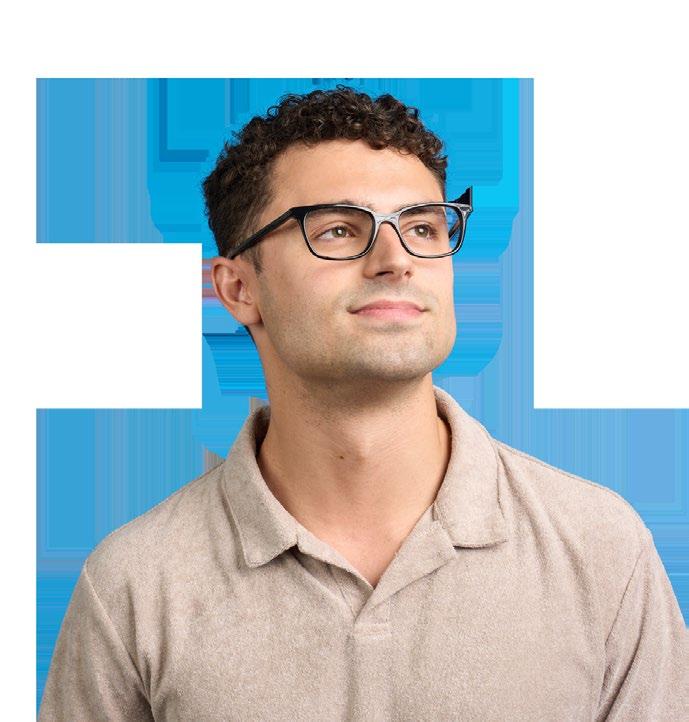
1 2 3


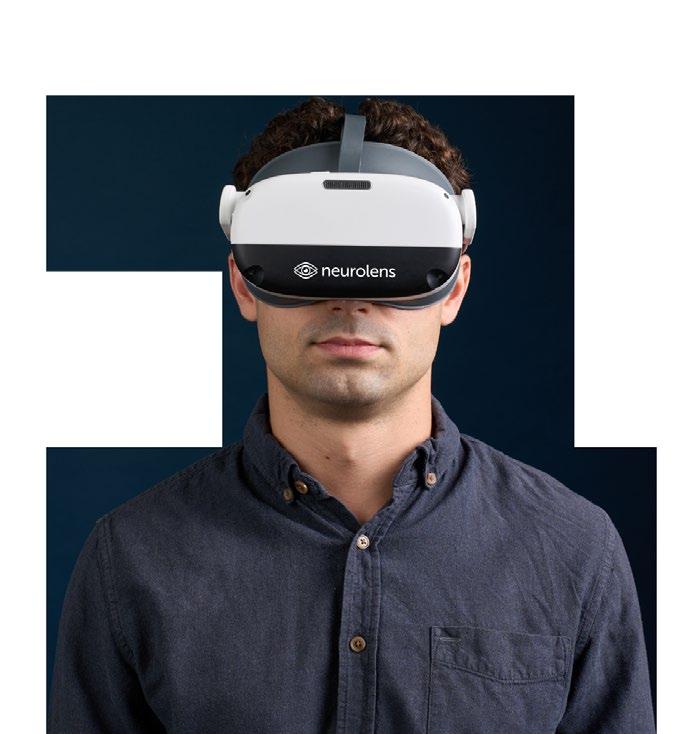
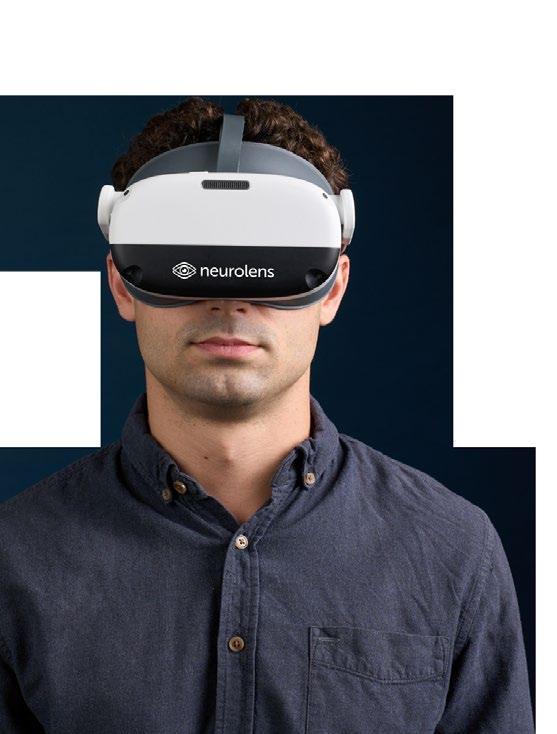
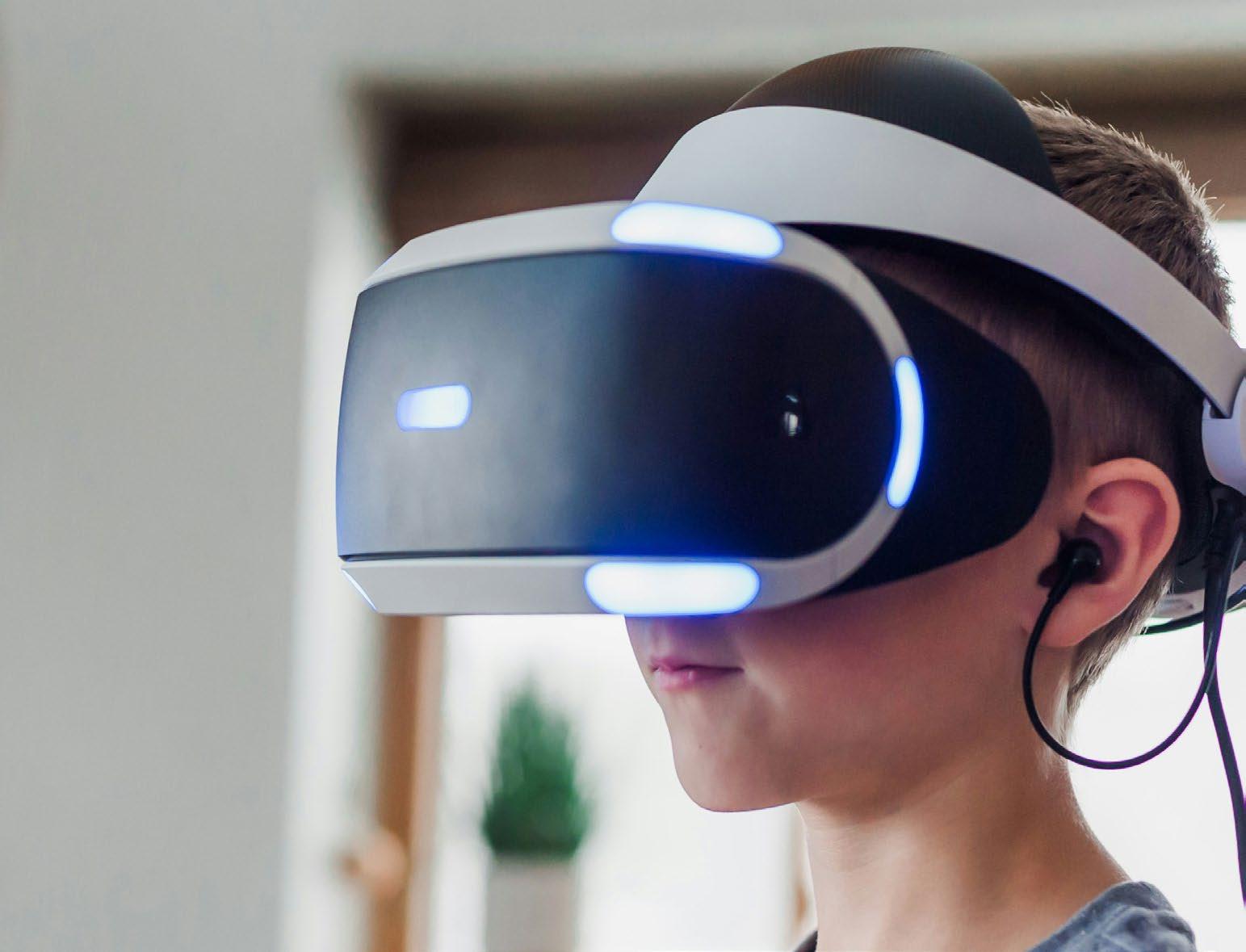
Have you ever played a game in one of those modern VR headsets? To the outside world, it appears you are swinging wildly at ghosts because on the inside you are swinging wildly at ghosts?! Well, get ready because VR headsets have become mainstream in optometry offices. The greater mobility of the testing equipment has led to potential for better office and workflow efficiencies, and greater patient accessibility.
Having multiple exam lanes for each optometrist improves patient flow, reduces patient waiting times and allows for greater efficiency at deploying medical personnel. Instead of the optometrist waiting for a patient to be “set up” in the exam room, the doctor can be examining a patient in the other room. This efficiency translates to better revenue per doctor day (and improved compensation) as well as improved bottom line net profitability. With the advent of in- lane VR headset testing, a patient can “start” the pre-exam testing in the comfort and privacy of an exam lane.
The VR headsets allow for a “virtual” technician that guides the patient through the testing process. This provides a consistent process with consistent education and testing instruction provided to each patient. A patient can be “left” in the exam
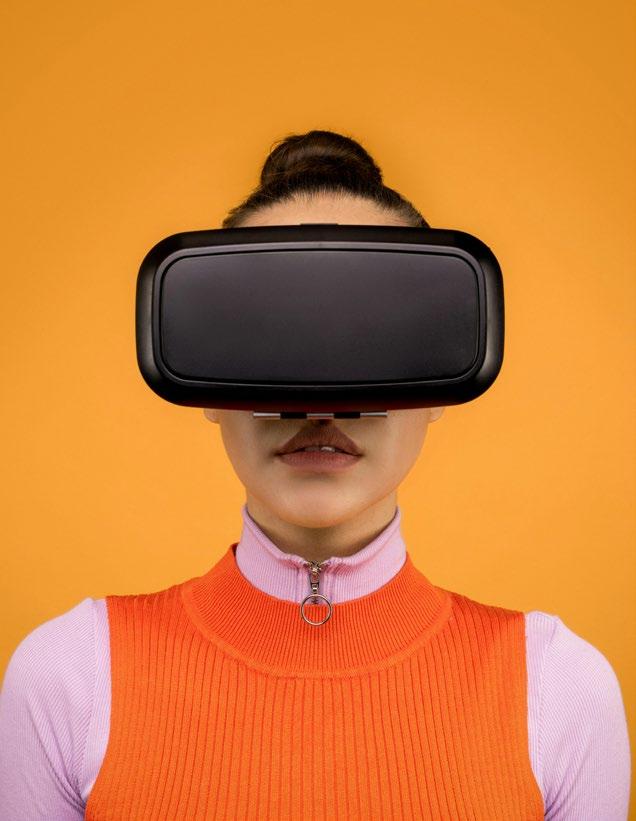
room and run the testing on their own. As patient testing autonomy becomes more commonplace, the process will become an expected part of the testing and patient education during the eye exam. In many multi-doctor optometry offices, the pretest room has become the bottleneck for office patient flow. The advent of advanced scanning such as OCT and super wide-field fundus photography has changed the optometrist’s role from data gathering to data analysis and treatment plan formulation.
With the advent of artificial intelligence and machine learning, the opportunity to provide AI Insights for optometric practitioners is now here. Universal VR testing platforms can easily send data and testing results to cloud based telehealth platforms for analysis and AI insights as an adjunctive practitioner support to the patient treatment plan. Retinalogik is a Canadian based VR headset that is using AI to support practitioners in the care of their patients. Off-site,
cloud-based data management companies can further provide objective feedback and AI insights. Care1 is a Canadian telehealth company that has developed objective arisen volume computations. This will allow for treatment analysis as new technologies for the treatment of dry AMD become available for patients inside optometric settings.
Neurolens has recently launched their mobile VR headset N3, which provides the ability to run phorias and fixation disparity via a VR headset. The interesting aspect to their set up is that optionally the patient can learn more about solutions and opt in to further discussions with their optometrist and optometric staff. This makes the sales process more streamlined and consistent. One of the powerful realizations of VR testing is

the “wow effect” that patients experience during the testing process. This increases the perceived value of the eye exam and improves capture rates and patient retention.
Many of the software companies that offer virtual reality testing are using the same hardware headset. This may lead to future consolidation so multiple pre-exam tests can be provided without changing headsets. The potential for patients to
further streamline the examination process exists in that patients could come in for technician standalone pretesting to improve the exam day workflows. Testing remote populations and athome testing are becoming a likely outcome with these new mobile technologies. In our offices we see the opportunity to reduce patient logjams in pre-exam on the fly. Technicians can decide to run visual acuity testing, visual fields, colour vision, and other testing away from the pretesting room to reduce patient wait times. The time to welcome VR testing in our optometric offices has arrived!
 Dear Eye Digest Magazine Subscribers,
Dear Eye Digest Magazine Subscribers,
As optometry continues to evolve, it is crucial to seize opportunities for advancement and secure your financial success. As a flat fee financial planning firm, we are dedicated to helping Optometrists like you navigate the complexities of finance and maximize your clinic’s potential. In this article, we will focus on three key strategies for advancing your clinic and achieving long-term success while optimizing your financial efficiency.
Marketing plays a critical role in attracting new patients and expanding your reach. Did you know that a marketing budget allocated from your clinic’s corporate account offers significant tax ad-
vantages? By using your corporate money for marketing expenses, you can receive tax deductions, optimizing your tax efficiency. Additionally, when advertising your clinic through targeted ads, consider reaching out to potential patients and communities near multi-family homes. This way, you can attract patients to your clinic while enjoying tax deductions to create a tax-efficient clinic. Maintaining a diligent record of all expenses allows for deduction during tax returns, valuing the tax benefits to funds initially lost.
Expanding your knowledge and innovation are crucial for advancing in the field of optometry. Attending workshops and conferences focusing on specialized care provides valuable insights, keep-
ing you on top of optometric advancements. By attending these events, you strengthen your skills and position yourself as an expert in new technology, techniques, or sub-specializations vital to advancing in your career. Attending professional development programs such as these opens opportunities to mark out a niche and develop new revenue streams that can ultimately lead to clinic success.
In finding a more specialized career platform, you can deduct these professional development programs as business expenses, reducing taxable profits, essentially reducing the overall clinic costs. Moreover, showing your savvy and expertise in your particular field of optometry allows for more valuable services to offer, increasing the clinic’s profitability.
3) Take Care of Your Team: A Health Spending Account (HSA) for
Building a motivated and dedicated team is essential for long-term success. A health spending account (HSA) can help in providing a well-supported team to enhance patient care, boost productivity, and profitability. An HSA is a particular type of account that provides a tax-free fund for qualified medical expenses. It is an account reserved for small business owners who want to control their healthcare costs and provide flexibility while allowing employees to receive the medical care they need.
Employers set up the account and contribute pretax dollars to the HSA, providing tax benefits on employee benefits while the employees use it to
pay for eligible medical expenses as defined by the government. By adopting a health spending account (HSA), the business owners can offer health care benefits to their employees and bring savings for themselves, while gaining valuable tax deductions and reducing insurance premiums.
The main benefit of HSAs is the pre-tax contributions, and use of funds for eligible medical expenses. HSAs can be especially attractive to a business owner of a small clinic because:
• The HSA can be a tax-efficient way to pay for medical expenses.
• The HSA can remove the cost of medical expenses from the clinic’s balance sheet, making it easier to manage cash flow.
• The HSA can reduce the taxable income, notably reducing the overall tax bill for the business.
• Offering an HSA provides employees with the benefits they desire, increasing employee satisfaction and retention rates.
Having a health spending account ensures that medical costs are tax-deductible, reducing the overall tax liability of the clinic and reducing cash output solely for healthcare benefits. The tax benefits of HSA apply to the business owner’s contribution and the employee’s contribution. The employer contributions are most typically a deductible expense while the employee’s contribu-
tions reduce taxable income. HSA ensures that employee health care comes first in the eyes of the employer, resulting in a clinic that cares more about their employee’s health and well-being.
In conclusion, implementing these three strategies helps advance your optometry clinic and maximize financial efficiency for long-term success. Unlocking tax efficiency, such as using corporate money for marketing budgets while keeping records of all expenses, provides tax deductions and reduces tax liability. Leveraging conferences and specialized care opens up new opportunities to learn from professionals and expand knowledge while reducing taxable expenses. Finally, providing a HSA benefits all parties involved - the employer gains tax benefits, employees access tax-free funds, and ultimately, it ensures that employees receive the healthcare benefits they require.
Experience the benefits of our flat-fee financial planning services, and take the next step towards a thriving optometry clinic.
Schedule a meeting by contacting our team at info@portfolioplanning.ca, and as a special offer for Eye Digest Magazine subscribers, we have exclusive discounts available. Remember, your passion for optometry deserves the best financial support; let us help you achieve success in the ever-evolving field of optometry.
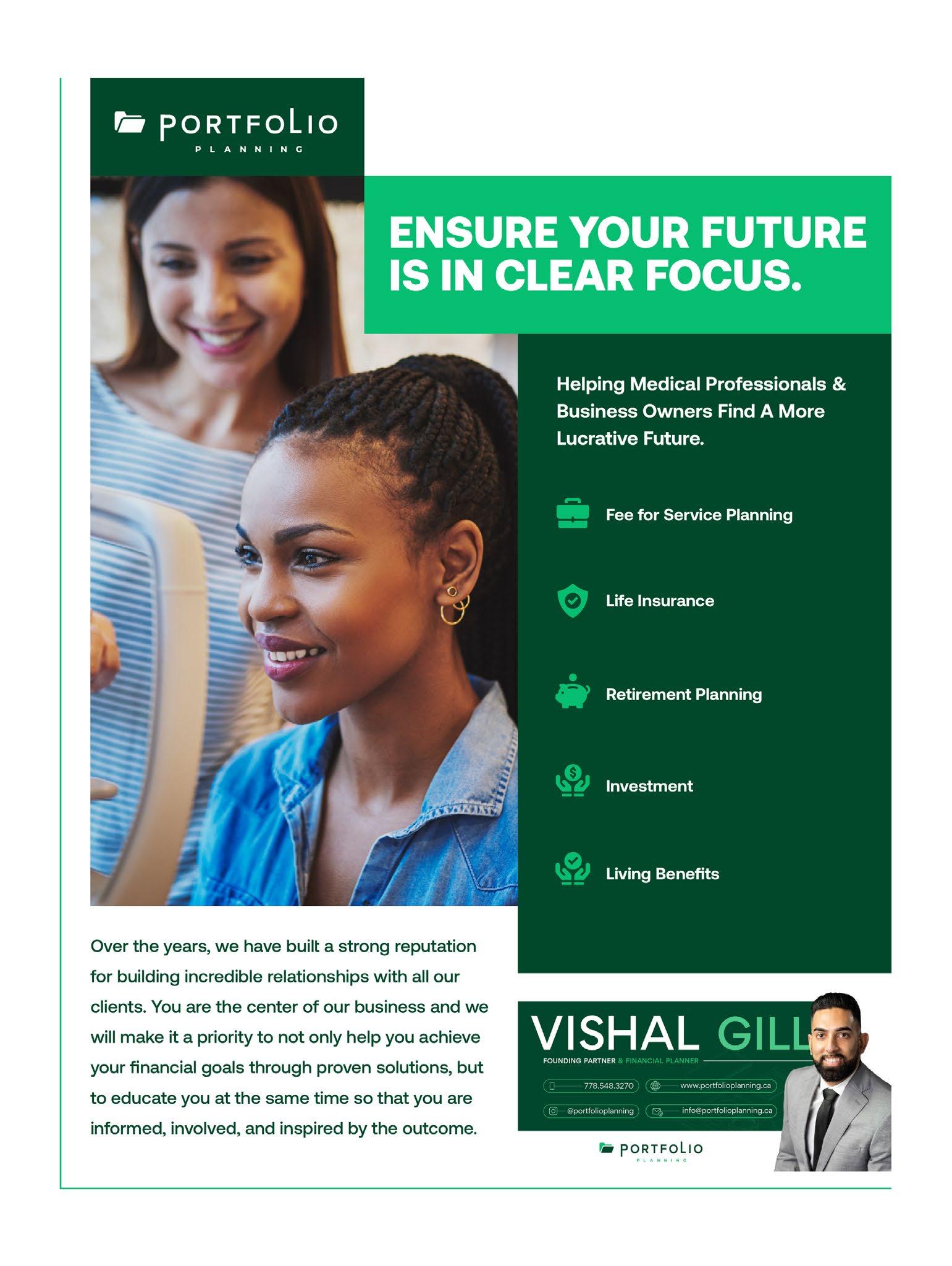
Dr. Kerry Salsberg, a Toronto-based optometrist and owner of Eyes on Sheppard, has lived and breathed optometry since he was a young child.
His father, Dr. Stan Salsberg, was also an optometrist and the original owner of the practice where he works, and he’s known since he was 6 years old that he wanted to follow in his father’s footsteps and become an optometrist. His father recently retired, but in the many years that they practiced together, he taught him that patient care and improving patient outcomes are the most important things in a practice. Dr. Salsberg is continuing that legacy today by incorporating best-in-class technology to provide optimal care for his patients.
When it comes to equipment there are many different vendors to choose from, but selecting the right equipment and, more importantly, the right partner is key to providing optimal patient care. Dr. Salsberg chose Topcon because of the breadth of its product line, its technical innovation, and its
commitment to service. “I think Topcon is bestin-class; best-in-class in terms of product offerings, as well as service offerings. And that’s very important. When you’re investing a lot of money into equipment, you want to make sure that you’re not just getting a product without the service level, and Topcon marries those two beautifully,” says Dr. Salsberg. He continues, “I’ve worked with many, many different companies in my 29 years of practicing, and in the 52 years that this practice has been around, and I can honestly say that Topcon is the best partner to have when it comes to technology and servicing that technology.”
Dr. Salsberg has been particularly impressed with his skilled and experienced Topcon rep, who has worked hand in hand with Dr. Salsberg and his staff to delve deep into the nuances of the technology and make sure they were getting the most out of their new equipment. They, in turn, have
been able to provide that level of technical skill to their patient base.
Eyes on Sheppard has a wide array of Topcon instrumentation, including the Triton Swept Source
OCT, the CV-5000S Auto Phoropter, the SL-D Slit Lamp, and a TRK-2P Auto Kerato-Refracto Tonometer. Each of those devices brings its own unique benefits to the practice, says Dr. Salsberg.
The CV-5000S has been an overall win for both staff and patients. Because it is an automated phoropter, it reduces repetitive stress on technicians and doctors. There have also been some key practice and patient benefits. “The CV-5000S has impacted my practice in a very positive way in terms of revenue. I’m able to see more patients per day, I’m able to do a refraction in less than 90 seconds, and I’m able to quickly differentiate old and new prescriptions, which means that it increases
sales in my optical dispensary. Patients love the engagements. They love new technology. They love the fact that they can make decisions quite easily because I’m not fumbling with any dials or knobs.”
The Triton Swept Source OCT has been particularly helpful in the early detection of visual pathologies and engaging the patient in their ocular health. As they say, “a picture is worth a thousand words,” and Dr. Salsberg has utilized the high-quality images from the Triton and the review software to educate patients. “I think the important thing is telling a story. Patients are concerned about their ocular health. And if we verbalize it, it doesn’t penetrate as much as showing them on a computer screen. So, the Triton review software allows me to earmark certain things in the retina that I’m concerned about. And it allows me to collaborate with patient care so patients have buy-in, they can see exactly what’s going on with their retina, and then we can review year-over-year.”

The Triton has also brought in additional revenue to the practice because OCT is a fee-for-service technology at Eyes on Sheppard. Rather than resisting this, patients have embraced this technology, and the practice has a 95% capture rate on this service. “Patients want the best technology, and they have embraced the Triton OCT. It allows them to really see what’s going in their eye, from the front all the way to the back.”
Patients are always at the forefront of Dr. Salsberg’s practice, and all major purchase decisions, like the CV-5000S and Triton, are made with the four E’s in mind: enhancing the patient experience, better educating the patient, increasing efficiency, and engaging the patient through the use of technology. “Patients expect to have best-in-class technology when they visit their eye doctor these days,” says Dr. Salsberg. “It’s what differentiates our practice. Our patients know that we have the best technology possible. When patients come in for their yearly eye exam, they know that we have a new technology that we can enhance patient care with,” says Dr. Salsberg. The Topcon Digital Lane has been particularly helpful in this regard. “The nice thing about my digital lane is I’m able to access all the equipment from the pre-testing area to the slit lamp imaging, and I can create a story for that patient, and it engages the patient. It educates the patient. I know what’s happening with that patient before they even sit in my chair. I have all that information, which means I save time, it increases efficiency, decreases touch points, and it’s just an overall better patient experience.”
The future of optometry looks bright for Dr. Salsberg and Eyes on Sheppard, and a key reason for that is his partnership with Topcon. “My relationship with Topcon is not just about the present. It’s about the future. Topcon is innovative. They really bring out the best equipment possible, and I
know that whether I use an OCT Triton right now, I know in three to five years, there’s going to be something that’s even better. And I’m going to bring it on because I believe in that model; I really believe in bringing the best technology to my patient base,” summarizes Dr. Salsberg. That ability to pivot on the fly and bring in new technology when it benefits their patient base has made Dr. Salsberg and Eyes on Sheppard one of the most successful optometry practices in Canada, and it will continue to serve them and their patients well into the future.
“I’ve worked with many, many different companies in my 29 years of practicing, and in the 52 years that this practice has been around, and I can honestly say that Topcon is the best partner to have when it comes to technology and servicing that technology.”Kerry Salsberg, OD Owner, Eyes on Sheppard
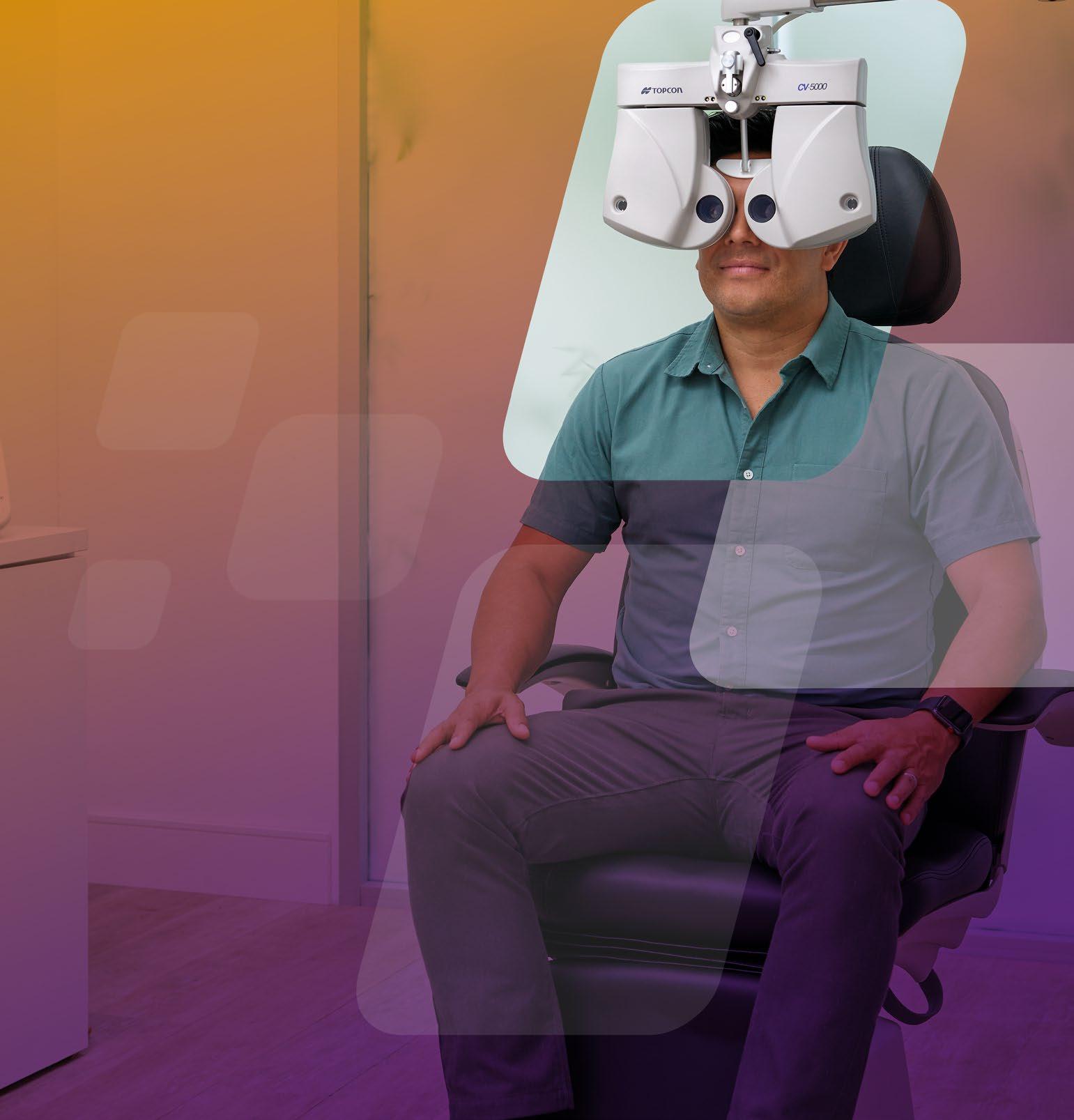
Modernize your practice with quick, reliable pre-testing, connecting directly to your digital exam lane. Elevate the patient experience and differentiate your practice with digital refractions, ergonomic chairs and stands, and slit lamps with digital imaging.
Modernize your practice with quick, reliable pre-testing, connecting directly to your digital exam lane. Elevate the patient experience and differentiate your practice with digital refractions, ergonomic chairs and stands, and slit lamps with digital imaging.
The Complete Exam Package
• Chairs and Stands
• CV-5000S
•
•
•


2 0 2
April 5-7, 2024
Hyatt Regency, Vancouver
REGISTER HERE REGISTER HERE
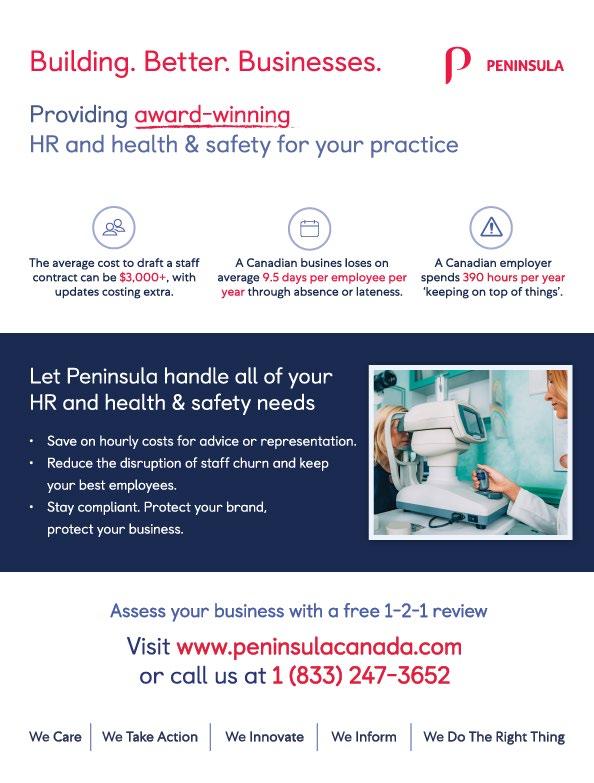

What does your vision supplement have to do with antifreeze and dishwasher rinse aid?
A recent paper from the Swiss Institute of Allergy and Asthma Research discusses how commercial dishwashers leave behind enough ethoxylated compounds (surfactant rinse aids) to cause cytotoxicity to the epithelial cells lining the gut.1 Without a heathy gut lining, we’re subject to immune provocation, and a plethora of inflammatory diseases.2 Additionally, the U.S. Food and Drug Administration (FDA) enacted new rules to test certain common drug and supplement excipients, or non-medicinal ingredients, for ethylene glycol (EG) and diethylene glycol (DEG), known in the automotive world as anti-freeze.3 Once again, we’re talking about the questionable types of ingredients that end up in our food supply and supplements.
“…individual components of the rinse aid were investigated separately, alcohol ethoxylates elicited a strong toxic and barrier-damaging effect.”
– Orgulur et al., 2023
It turns out the single cell layer that lines your GI tract is highly sensitive to common ethoxylated compounds. I’ve written here previously about the
links between gut health, microbial dysbiosis, and chronic inflammatory diseases, like AMD, DR, glaucoma, and DED. Even low exposures of 1:20,000 v/v dilution is enough to cause damage, with researchers noting “decreased transepithelial electrical resistance, increased paracellular flux, and irregular and heterogeneous tight junction immunostaining”. This is the beginning of leaky gut, and all the fallout to come.
The FDA states they regularly receive reports of poisonings, even fatal, in those who’ve consumed drug products contaminated with ethylene glycol or diethylene glycol. New industry guidance from May 2023 advises industry to test for these contaminants in the following products: glycerin, propylene glycol, maltitol solution, hydrogenated starch hydrolysate, sorbitol solution, “and other high risk drug components”. In addition to their use in manufacturing drug and OTC products, several of these ingredients are also commonly found as non-medicinal ingredients in natural health products. Are we sure every manufacturer follows the new rules?
Under the guise of regulatory “safety profiles’’ established back in the mid-20th century, when little was known about gut health, many drugs and natural health products now utilize synthetic surfactant ingredients, often ethoxylated compounds, such as polysorbate 80 (TWEEN), polyethylene glycol, poloxamer, etc.4 While the risk of these compounds might be acceptable in a life/sight saving drug of limited exposure, particularly when many are actually injected vs ingested, does it make any sense to chronically consume them via purported “health” product, knowing what havoc they wreak in the gut milieu? We should think not.
In 1833 the first softgel capsule (SGC) patent, “Bladders made of gelatin”, claimed production by “dipping a gelatin solution into a small leather bag filled with mercury”.5 Actually consuming this would seem crazy today! Nobody would take it knowing it was made with a toxic metal. So how are plasticizers, parabens, and ethoxylated compounds any different, once we understand the insidious nature and impact on our GI tract? It’s like we’re still living in the dark ages.
SGCs also present numerous problems for the manufacturer. Raw material loss due to scrap, sometimes upwards of 15%, drive up costs, and capsule integrity issues can haunt everyone from the production department, to end users, who most certainly complain when they open a brand new bottle, only to find exploded capsules or everything stuck together inside.

Gelatin is of animal origin, so vegetarians and many religious observers are precluded. Typical sources are either bovine and porcine, with avian and piscine as less common alternatives.6 And “beef gelatin” is an absolute misnomer, as the partially hydrolyzed collagen required for production is derived from boiling animal byproducts, namely
the chemically dehaired hides and carcasses, in an alkali solution.7 That’s certainly no rib steak! And to prevent microbes from consuming a convenient protein snack, formulators typically employ some combination of preservatives, including .2% methyl and propyl parabens.8
“A gelatinous mass was formed, and no release of the contents was observed” – Bachour et al., 2017
Beyond the problematic ingredients in current softgels, dissolution issues plague modern SGC technology, coming in the form of gelatin cross-linking. A team from U Waterloo and the Univ. of Michigan published 2021 in the journal Pharmaceutics, “Challenges of Dissolution Methods Development for Soft Gelatin Capsules”, enumerating the issues associated with proper rupture and dissolution of SGCs due to heat, humidity, and chemical interaction, including those due to impurities in PEG and polysorbate.9 Bachour and colleagues noted in stressed SGC samples, “…all soft-shell capsules exposed to long-term stability conditions failed the rupture test.” This means the capsules don’t open how they’re supposed to, and the active ingredients may not be released for absorption.10
Liquid-filled hard capsule (LFHC) technology provides all the benefits of softgels, from improved active ingredient solubility to stability, without the associated downsides of SGCs.11 Production yields are effectively 100%, keeping costs down, and inert nitrogen gas flushes out oxygen during encapsulation, protecting the sensitive contents sealed inside. Better yet, vegan-friendly formulas are achieved using plant-based cellulose capsules, so nobody is excluded for their religious or personal beliefs.
Contact Vision Essence to learn more about Early Defence liquid-filled hard capsules, a clean-label Natural Health Product containing all three macu-

lar carotenoids, lutein, zeaxanthin, and meso-zeaxanthin in a 10:2:10 ratio, marketed to help maintain eyesight in conditions related to sunlight damage, such as cataract and age-related macular degeneration (AMD). Simple, non-medicinal ingredients include olive oil and non-GMO sunflower lecithin, so they’re not made with any of the nine major allergens, gelatin, or synthetic emulsifiers like polysorbate or polyethylene glycol. Olive oil and natural phospholipids solubilize the carotenoids and help form chylomicrons to aid absorption through the GI tract. Finally, every batch undergoes multiple rounds of testing at independent ISO 17025:2015 accredited labs, ensuring content, stability, and purity.
Citations
1. Ogulur et al. (2023). Gut epithelial barrier damage caused by dishwasher detergents and Rinse aids. Journal of Allergy and Clinical Immunology, 151(2), 469–484. https://doi.org/10.1016/j. jaci.2022.10.020
2. Hrncir, T. (2022). Gut microbiota dysbiosis: Triggers, consequences, diagnostic and therapeutic options. Microorganisms, 10(3), 578. https://doi.org/10.3390/microorganisms10030578
3. Center for Drug Evaluation and Research. (2023, May). Testing of glycerin, propylene glycol, maltitol solution, hydrogenated. U.S. Food and Drug Administration. https://www.fda.gov/regulatory-information/search-fda-guidance-documents/testing-glycerin-propylene-glycol-maltitol-solution-hydrogenated-starch-hydrolysate-sorbitol
4. Final report on the safety assessment of polysorbates 20, 21, 40, 60, 61, 65, 80, 81, and 85. (1984). Journal of the American College of Toxicology, 3(5), 1–82. https://doi. org/10.3109/10915818409021272
5. Augsburger, L., & Hoag, S. (2017). Pharmaceutical Dosage Forms: Capsules. https://doi. org/10.1201/9781315111896
6. Rather, J. A., Akhter, N., Ashraf, Q. S., Mir, S. A., Makroo, H. A., Majid, D., Barba, F. J., Khaneghah, A. M., & Dar, B. N. (2022). A comprehensive review on gelatin: Understanding impact of the sources, extraction methods, and modifications on potential packaging applications. Food Packaging and Shelf Life, 34, 100945. https://doi.org/10.1016/j.fpsl.2022.100945
7. Roy, B. C., Das, C., Hong, H., Betti, M., & Bruce, H. L. (2021). Effects of dehairing treatment on gelatin yield and quality from bovine hides. Waste and Biomass Valorization, 13(2), 831–843. https:// doi.org/10.1007/s12649-021-01582-z
8. Naharros-Molinero, A., Caballo-González, M. Á., de la Mata, F. J., & García-Gallego, S. (2023). Shell formulation in soft gelatin capsules: Design and characterization. Advanced Healthcare Materials, 13(1). https://doi.org/10.1002/adhm.202302250
9. Damian, F., Harati, M., Schwartzenhauer, J., Van Cauwenberghe, O., & Wettig, S. D. (2021). Challenges of dissolution methods development for soft gelatin capsules. Pharmaceutics, 13(2), 214. https://doi.org/10.3390/pharmaceutics13020214
10. Bachour, G., Bou-Chacra, N., & Löbenberg, R. (2017). Evaluation of the rupture test for stability studies of soft-shell capsules. Dissolution Technologies, 24(2), 16–19. https://doi.org/10.14227/ dt240217p16
11. Nirale, P., Arora, S., Solanki, A., Bhat, J., & Singh, R. K., Yadav, K. S. (2022). Liquid filled hard shell capsules: Current drug delivery influencing pharmaceutical technology. Current Drug Delivery, 19(2), 238–249. https://doi.org/10.2174/1567201818666210301094400
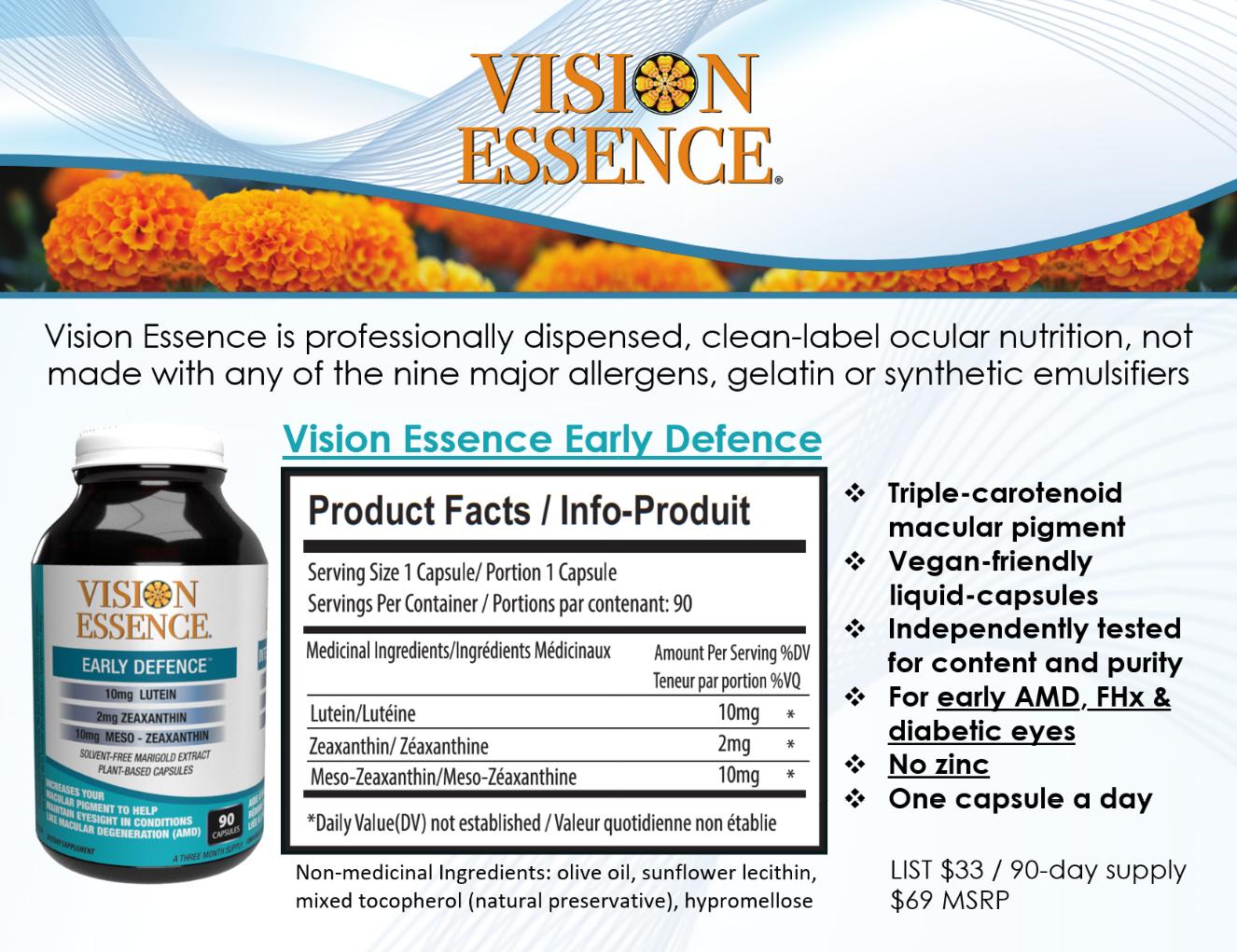
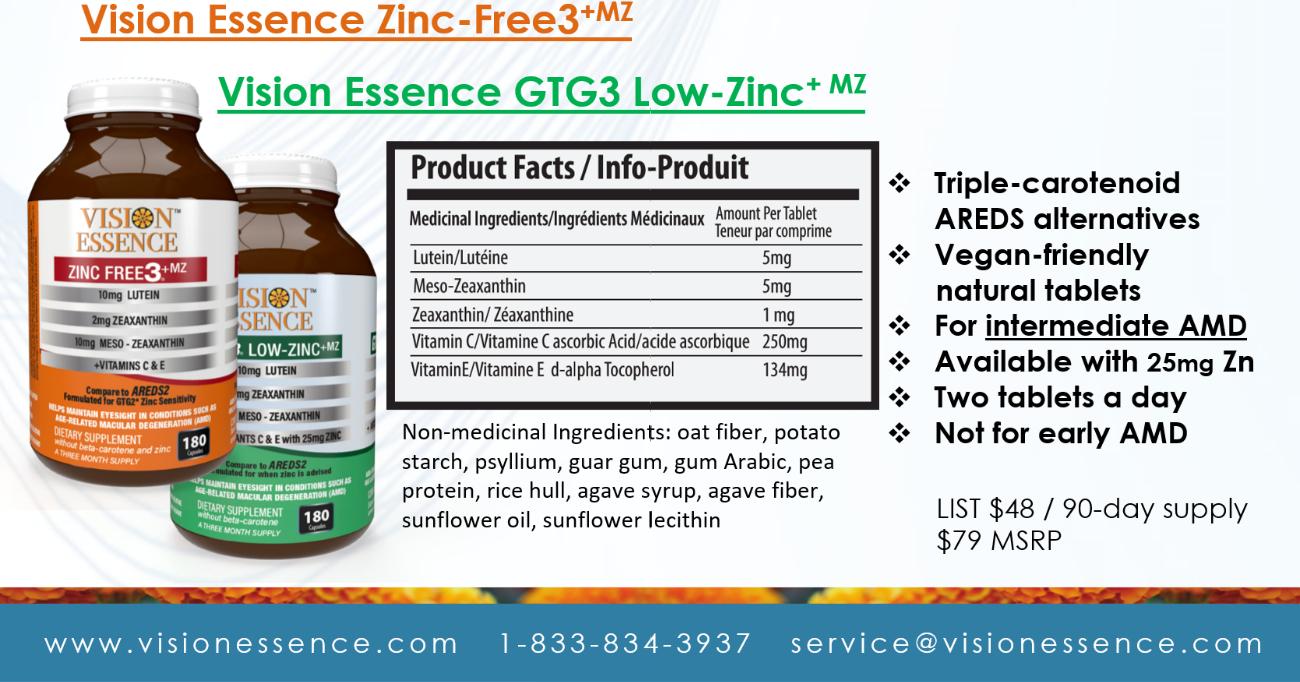

A home serves many roles.
A home is a repository of memories, a sanctuary, a venue for gatherings, and increasingly, a makeshift office. However, it can also harbour hazards, pose safety issues and even become a prison of isolation. Falls at home, a leading cause of unintentional injury hospitalizations, affect all ages and result from factors like reduced depth perception and visual acuity.
Fortunately, since 2022, residents of British Columbia have had access to a fall prevention program through Vision Loss Rehabilitation Canada (VLRC). The non-profit healthcare organization provides specialized rehab for people with vision loss and offers SAFE, a seven-week fall prevention program addressing unique risks tied to vision loss.
VLRC’s group program is designed to promote participation and group problem-solving, enabling participants to acquire valuable skills. Travel and distance are not barriers, as individuals can choose to participate virtually or in-person at VLRC’s Victoria office.
According to Matt Ellies, Manager, Healthcare Integration for VLRC in BC, SAFE has made a substantial impact on the lives of their clients.
“One of our clients, ‘Jane’, in her early 80s, had a fear of falling that hindered her daily activities and led to social isolation,” shared Ellies.
“Through the program, she learned techniques for staying safe at home, which gave her the confidence to venture out more. Furthermore, she forged a connection with another participant who lived close by. As a result of her newfound confidence and friendship, she is leaving the house frequently for walks and together they participate in other health programs.”
For older adults, a fall can precipitate a hip fracture, triggering a cascade of health, mobility, and independence issues. By preventing falls, VLRC enhances and extends clients’ lives.
A hallmark of the SAFE Program is that it alleviates the burden on the healthcare system. By decreasing the need for hospitalization, SAFE plays a part in reducing two of the province’s major issues: healthcare costs and overcrowding in hospitals.
VLRC Orientation & Mobility Specialists teach clients with vision loss how to be safe at home and prevent falls.
Optometrists’ role in safeguarding patients from falls
As Optometrists, you have a unique opportunity to help your patients with varying levels of vision loss who you suspect are at risk of falling within their homes.
Your patients with vision impairments are at a higher risk of experiencing falls. However, you can play a role in ensuring their safety by referring them to fall prevention programs such as VLRC’s SAFE Program. The SAFE Program caters to the specific needs of individuals with vision impairments and provides comprehensive support to reduce the risk of falls. This program includes assessments to identify potential fall hazards in the client’s environment and recommendations for home modifications to promote safety. VLRC also provides education on exercises and techniques to improve balance and coordination, which can significantly reduce the risk of falls.
If you suspect your patient is at a high risk for falls, visit Vision Loss Rehabilitation Canada’s website to make a referral today.
Coordinated care for holistic well-being
VLRC collaborates closely with optometrists and community service providers to promote home safety, ensuring comprehensive support for clients.
“We have built great relationships with service providers in BC,” Ellies conveyed,
“which ensures our mutual clients receive high-quality, coordinated care.”
VLRC not only supports healthy aging at home but also offers programs to prevent falls and promote independence.
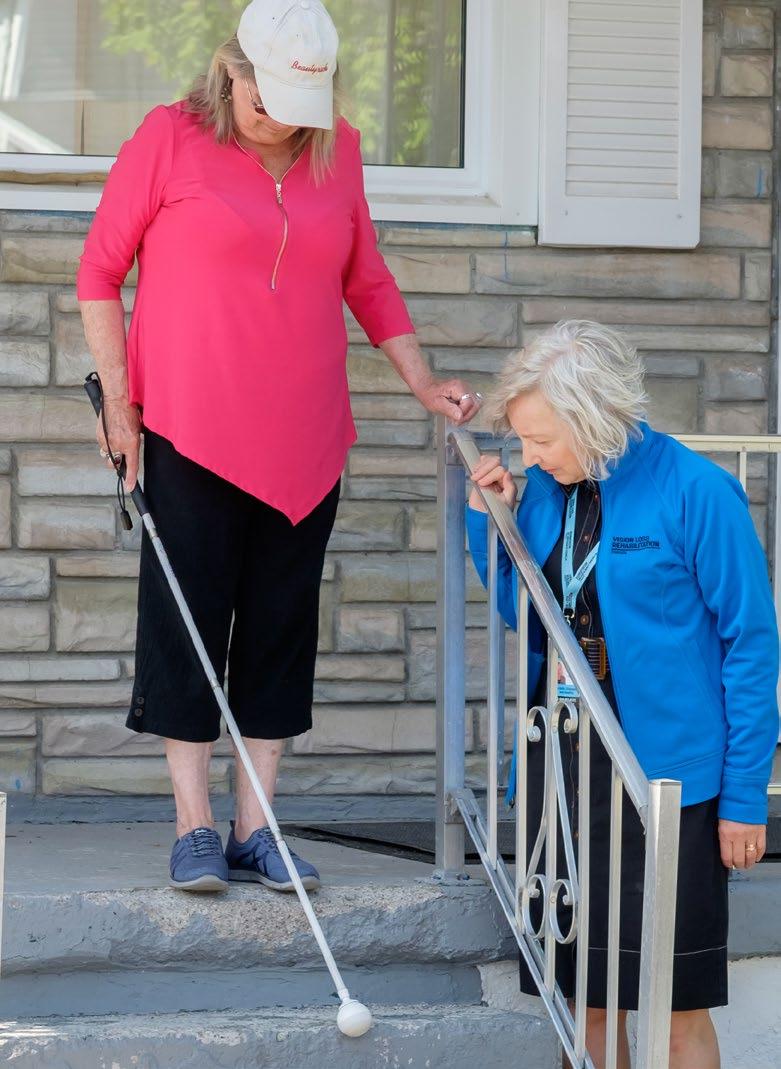

Two weeks into the start of the school year, young adults returning to the lecture hall are frantically requesting appointments to the office.
The tale, although presented differently, always echoes a familiar story – students, particularly those in post-secondary school, are finding their vision not quite as crisp as it used to be. Some may even present with headaches that distract them from their homework. Increased in-person schooling after years of pandemic lockdowns and a laptop for company only serve to highlight this glaring issue.
The initial answer is obvious – with the advent of online learning for all age groups, it is not surprising that adult-onset myopia is on the rise. Two or three clicks of minus in the phoropter is generally all it takes for these once-emmetropes to appreciate the 20/20 line.
However, it is important to provide not just the appropriate counselling for these patients, but also incorporate tools for these patients to reduce symptoms such as headaches, eye strain, and ocular surface irritation.
Digital eye strain is not a new concept. A variety of ocular conditions can be attributed to increased screen time, such as dry eye syndrome and accommodative stress or spasm. For instance, excessive screen time has already been linked to severe meibomian gland atrophy in children aged 6 to 17 years old.1
A quick view under the slit lamp of the corneal surface can already elucidate signs of dry eye syndrome and are worthwhile to add to the standard child eye exam. However, the strain of increased
screen time and near work on binocular vision is not as glaringly obvious and can often masquerade as other elusive symptoms.
For instance, consider a teenager entering university who spent their past summer playing extensively for a soccer team. They report that they suffered a concussion a few months ago, but never had any symptoms and were cleared to continue playing for the season. Now that they are a few weeks into school, they notice frequent headaches, blur at distance, and feeling unmotivated in class.
As an eye care professional, one could consider convincing this teenager that glasses are trendy and proceed to direct them to the optician. This may solve the initial concern of squinting at the lecture hall. But it is important to consider the host of binocular vision issues that are rapidly developing in this demographic, with intensive near work demands. Schooling is already mentally taxing to begin with, and dealing with additional symptoms, concussion-related or not, can make such obstacles even more insurmountable.
One does not need to be a vision therapy or rehabilitation specialist to add elements into the office to help screen and highlight the potential need for further assistance in school to help such patients improve their quality of life. Rather, identifying such students who could benefit from vision therapy or even spectacle therapy such as a low near add could help improve symptoms substantially.
Consider computer spectacles, which are already being prescribed to pre-presbyopes who frequently spend hours in front of the computer in the office or at home. Don’t forget that young children are also spending equally as long, if not more time, in front of a screen.
Moreover, the inclusion of surveys or questionnaires in the waiting room can easily help pinpoint youths in need of intervention. The Convergence Insufficiency Symptom Survey (CISS) is one example of a survey that can be easily employed in the office, which may help better quantify symptoms related to binocular vision issues such as convergence insufficiency.
The Convergence Insufficiency Treatment Trial (CITT) Investigator Group previously determined that CISS scores can distinguish children with symptomatic CI, and were not affected by examiner bias.2 However, some literature states that screening for CI may not be indicated as visual symptoms can be common and unrelated to binocular vision issues.3 Therefore, it is important to rely on one’s own clinical judgment to interpret
the results of such questionnaires and surveys.
The King-Devick test is another example of a screening test that can be easily employed in the office with minimal training or equipment required – one simply needs a paper, pen, and a booklet. By evaluating the speed of rapid number-naming, the test can screen for patients with a concussion who may be suffering from long-term symptoms. Those with head trauma have been found to be over five seconds slower on the King-Devick test.4
As students head back into another school year, remember that this is an opportunity to identify and address binocular vision issues early before they begin to impact schooling and their quality of life.
References
1. Cremers SL, Khan ARG, Ahn J, et al. New Indicator of Children’s Excessive Electronic Screen Use and Factors in Meibomian Gland Atrophy. Am J Ophthalmol. 2021;229:63-70. doi:10.1016/j. ajo.2021.03.035
2. The Convergence Insufficiency Treatment Trial (CITT) Group. Validity of the Convergence Insufficiency Symptom Survey: A Confirmatory Study. Optom Vis Sci. 2010;86(4):357-363. doi:10.1097/ OPX.0b013e3181989252.Validity
3. Horwood AM, Toor S, Riddell PM. Screening for convergence insufficiency using the CISS is not indicated in young adults. Br J Ophthalmol. 2014;98:679-683. doi:10.1136/bjophthalmol-2013-304533
4. Galetta KM, Barrett J, Allen M, Branas CC, Messner L V. The King-Devick test as a determinant of head trauma and concussion in boxers and MMA fighters. Neurology. 2011;76(17):1456–1462.

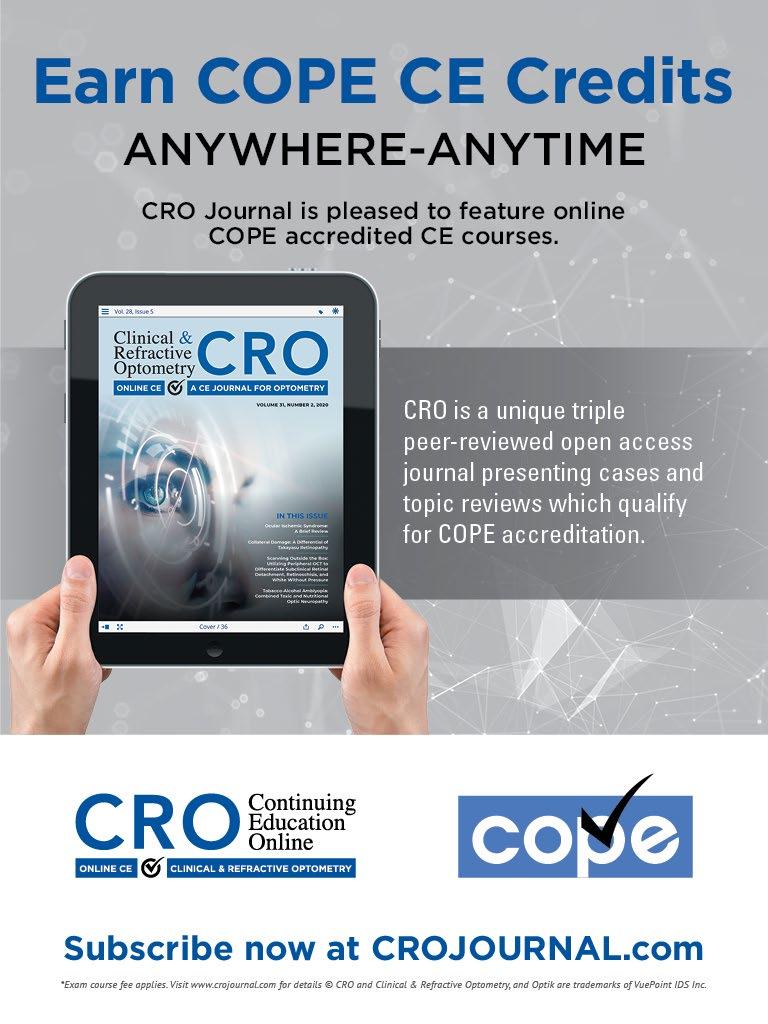

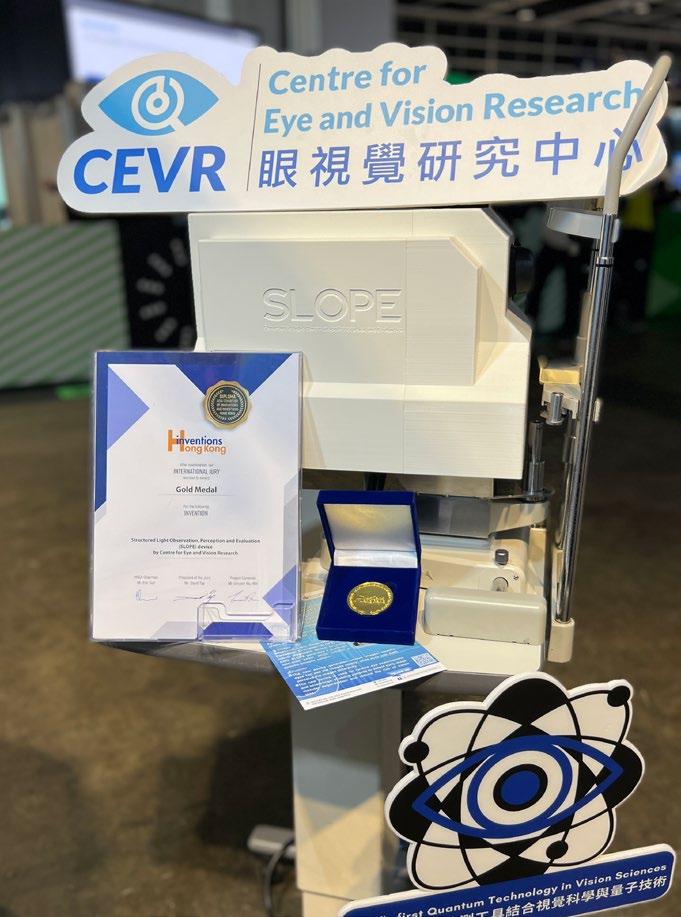
Award-winning technology promises earlier diagnosis of macular degeneration and more independence for people with visual impairments
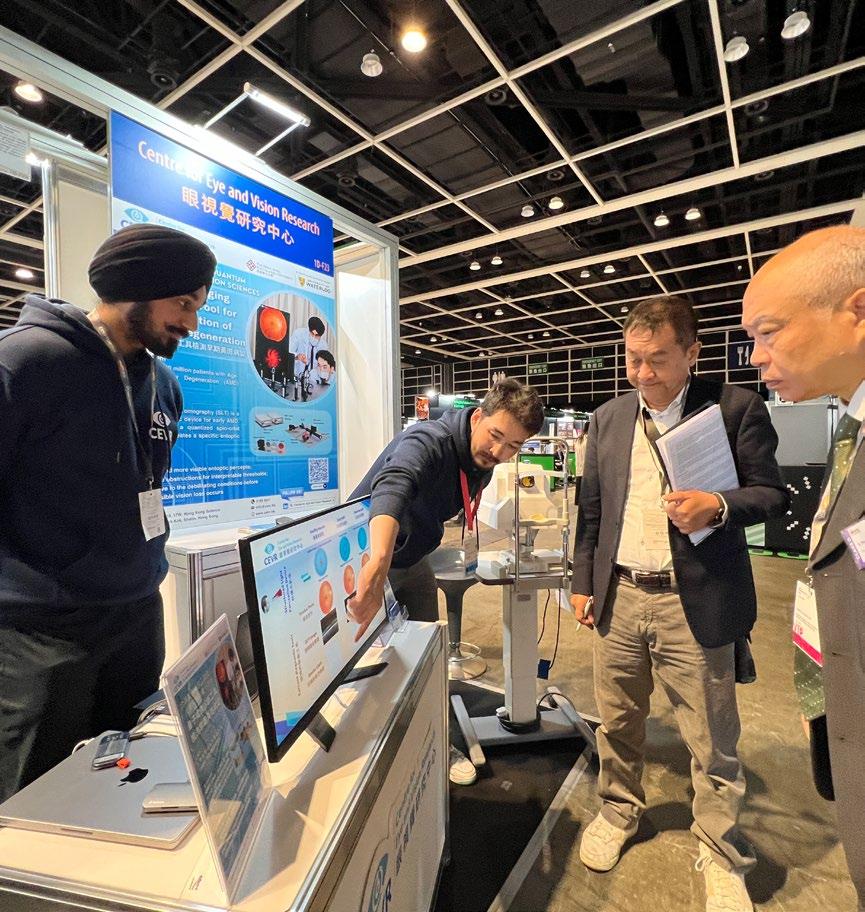
Navigating the world safely can be a major challenge for people with vision impairments. One award-winning new invention aims to change that, while another aims to diagnose a common eye disease earlier, potentially preventing vision loss in the first place.
The Centre for Eye and Vision Research (CEVR), a Hong Kong-based collaboration between the University of Waterloo and the Hong Kong Polytechnic University, recently won gold medals for both the inventions it entered in the Asia Exhibition of Innovations and Inventions Hong Kong.
“It’s encouraging for our teams to be recognized in this way and an indication of the maturity of these inventions,” said Dr. Ben Thompson, a professor at Waterloo’s School of Optometry & Vision Science and CEO and Scientific Director of CEVR. “This recognition will help accelerate the transition of these projects from research to commercial success.”
Detecting macular degeneration earlier
One of the inventions is the world’s first piece of quantum technology in vision science. It’s a collaboration between quantum optics experts, particularly Drs. Dmitry Pushin, David Cory and Dusan Sarenac of Waterloo, and Waterloo and Hong Kong vision researchers led by Thompson. The underlying technology is a structured light beam that people even at the earliest stages of macular degeneration perceive differently than those without the disease.
Macular degeneration is the leading cause of vision loss in people over the age of 55, affecting some 2.5 million Canadians. Because it damages central vision, it can severely impair patients’ ability to read, drive and work.
Detecting the disease early, before irreversible vision loss has occurred, could allow patients to make lifestyle changes or get treatments that slow down or stop the progression of the disease.
However, no technology currently on the market can detect macular degeneration until damage has begun. The team behind the quantum imaging diagnostic tool aims to change that.
“The quantum team has developed a laser beam that can be wrapped around a central beam like a corkscrew,” said Thompson. “It’s basically a complex 3D pattern of light polarization. If you look at this laser beam through a camera, you just see a uniform field of light. But if you look at it with the human eye, the polarization interacts with the nerve fibres at the back of the eye, which also have polarization properties. This projects a starburst pattern that is very sensitive to early changes in the retina.”
The team has developed a prototype that relies on patients to report what they see. Clinical testing with this prototype is yielding promising results. However, the scientists are also working on an improved system that will directly record the reflected structure of light from the patient’s retina. This would make the technology less subjective and more accessible.
To commercialize the screening system, a spin-out company, Incoherent Vision Inc., has been set up in Canada and is attracting investor attention. The company is also in the process of setting up a subsidiary in Hong Kong.
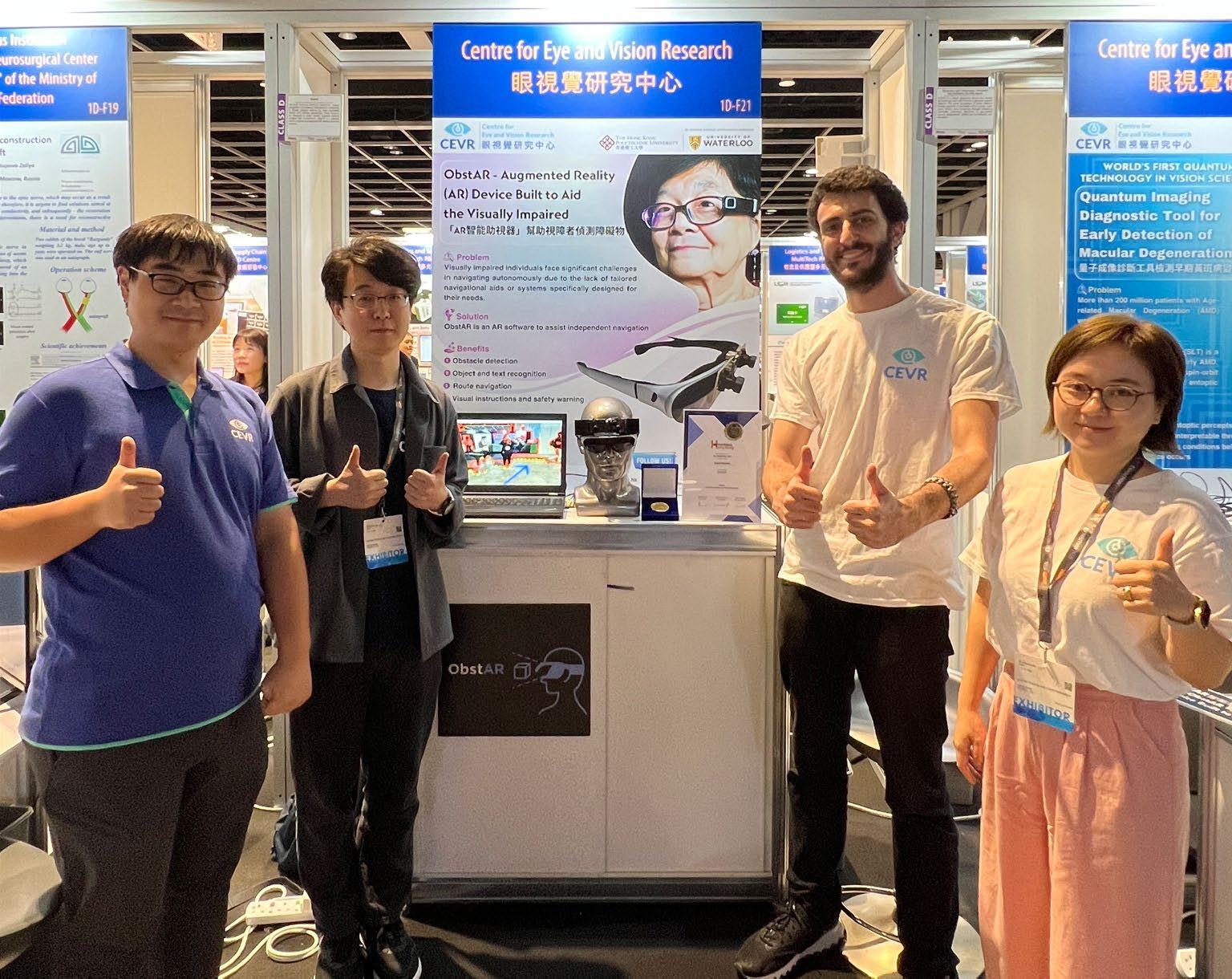
Using augmented reality to navigate more safely
The other award-winning technology is an augmented reality navigation system for people who already have vision loss. It can be used with any extended reality headset system.
Using AI, the system uses data from the headset’s camera to identify what’s in the user’s surroundings and find a safe path through obstacles. This path is indicated with an arrow that can be calibrated to be visible to individual users, no matter the pattern of their vision loss. The system can also inform the user of hazards through a sound or buzz.
The ObstAR system has been developed with input from people with various types of visual impairments. The team is now collecting additional real-world user data and feedback. It plans to launch a spin-out company next year with the hope of getting a product to market within a few years.
“The recognition that these inventions are among the top in Asia speaks to their creativity and potential,” said Thompson.
“Ultimately, both projects aim to help people lead independent, productive lives, which is good for them and good for society.”



